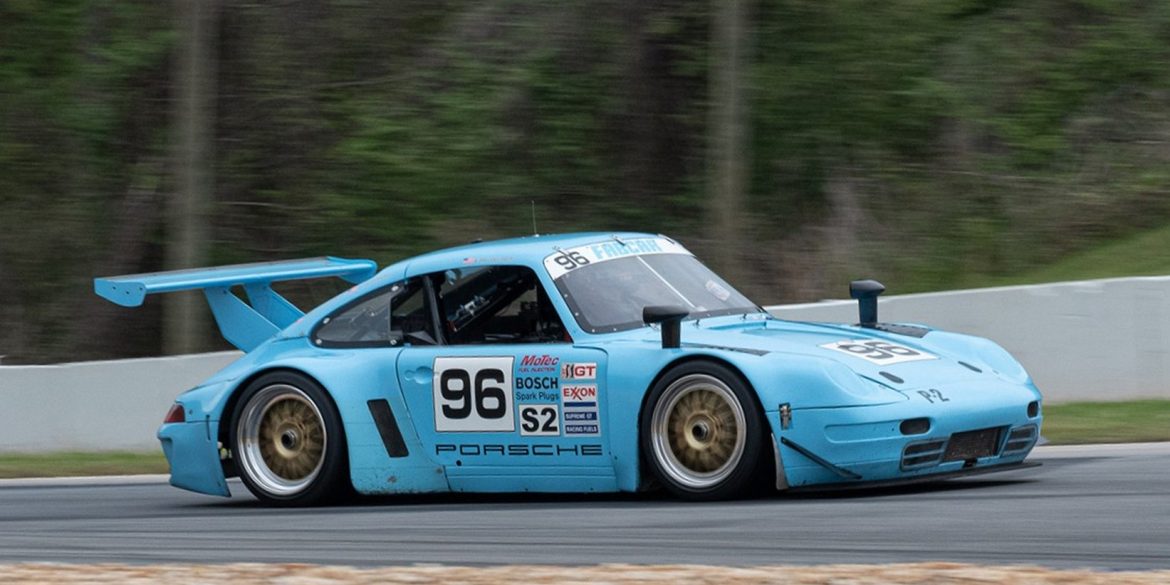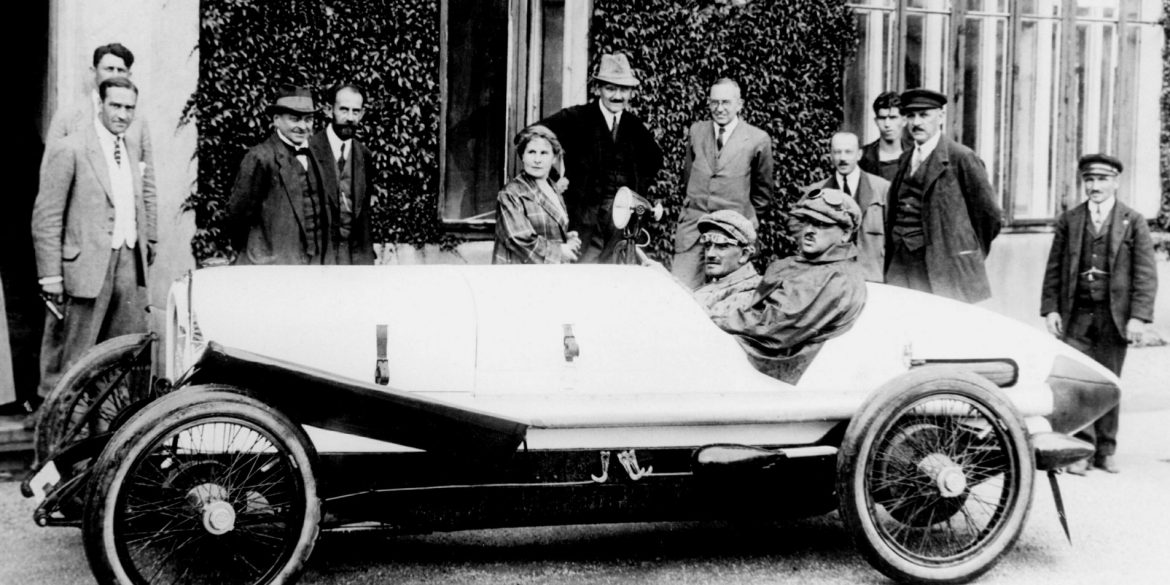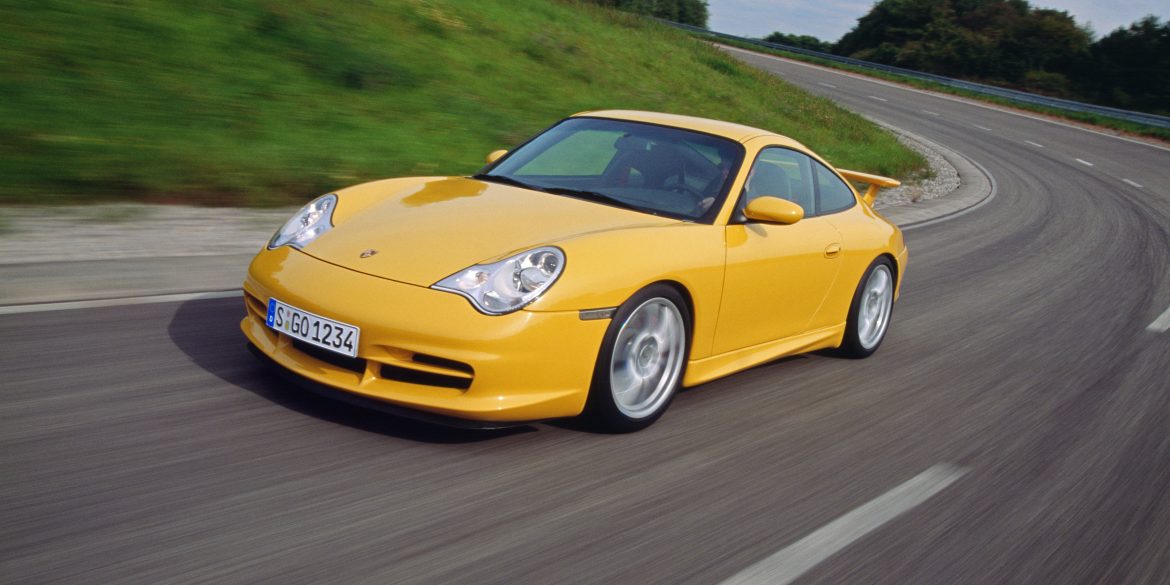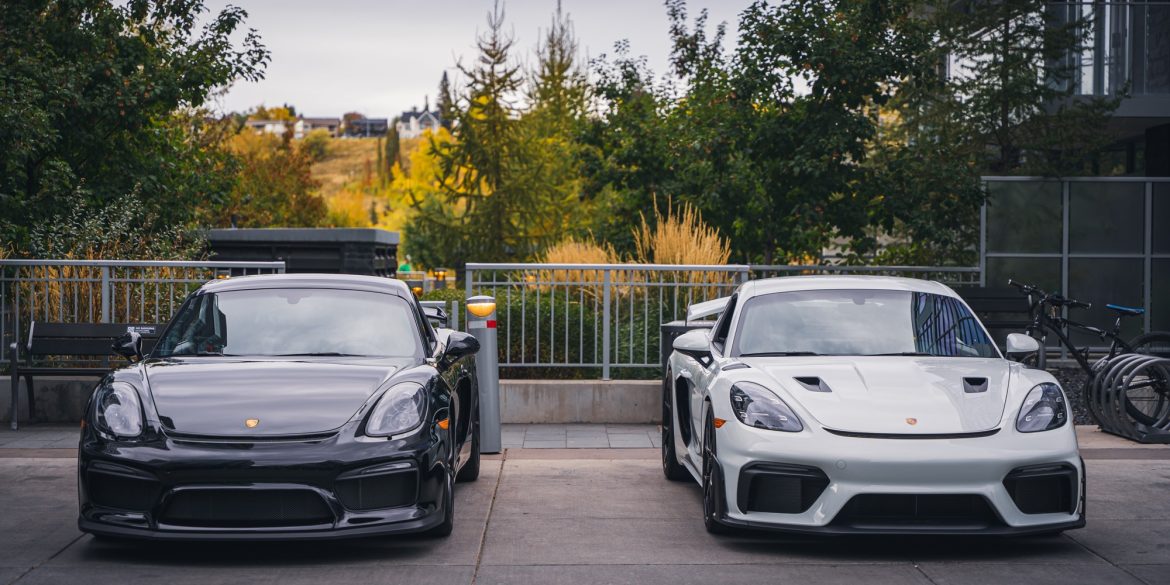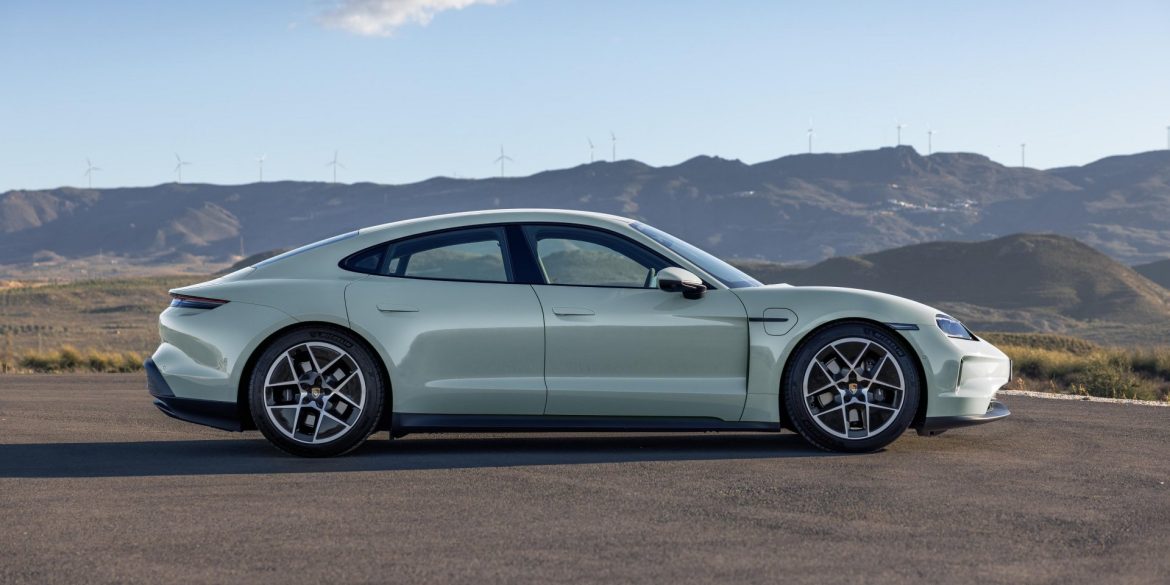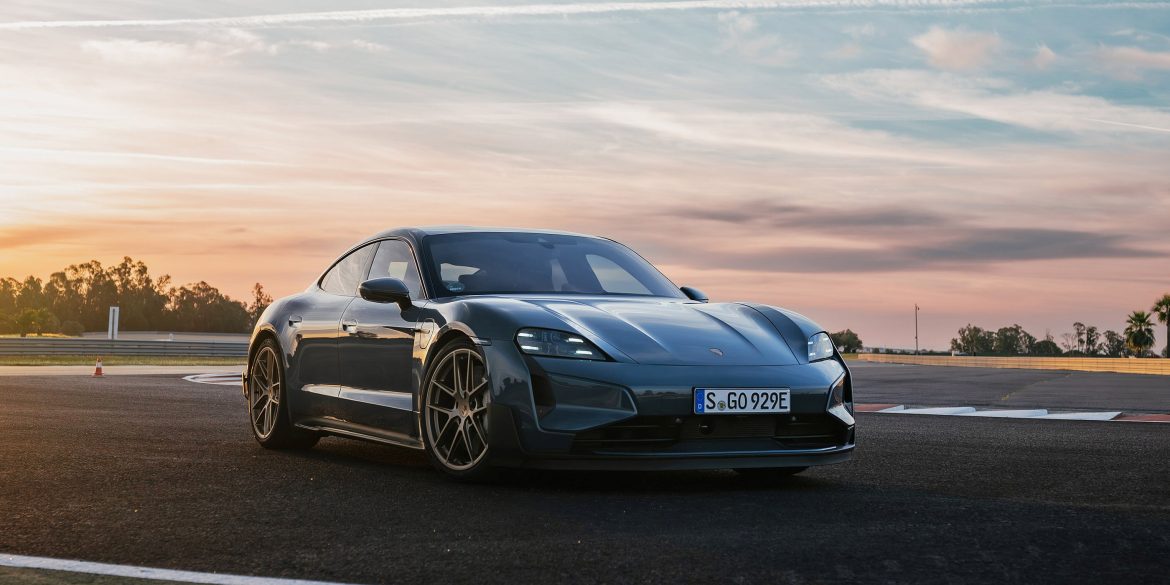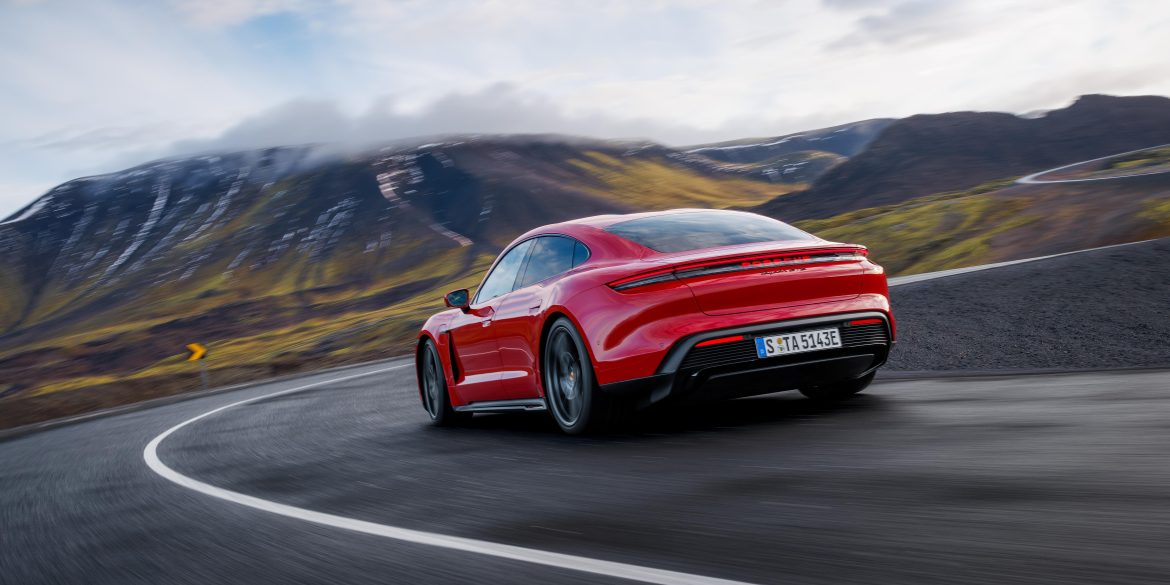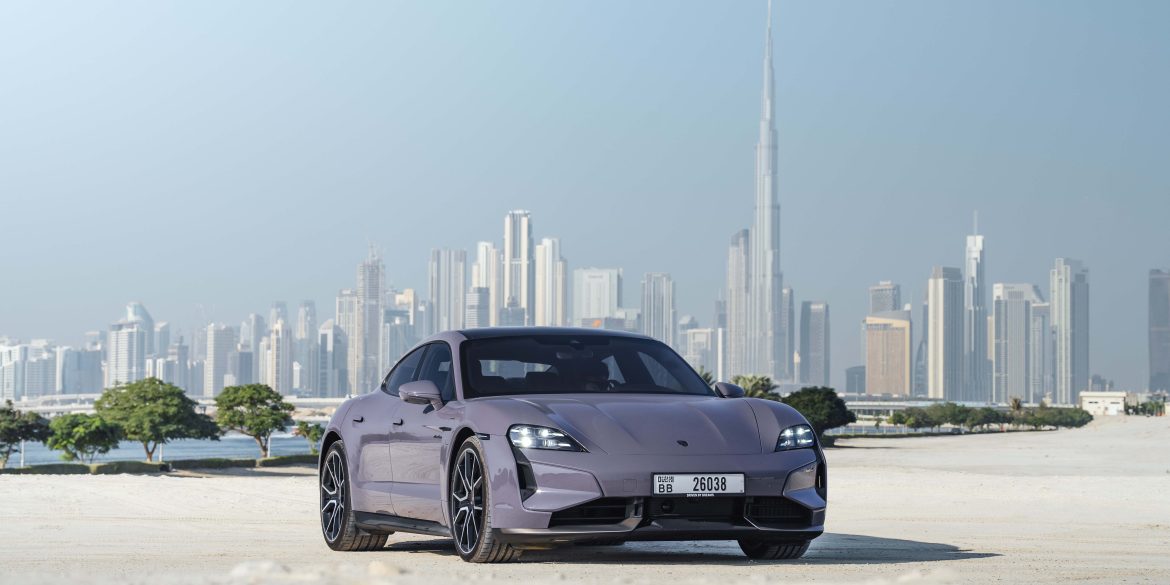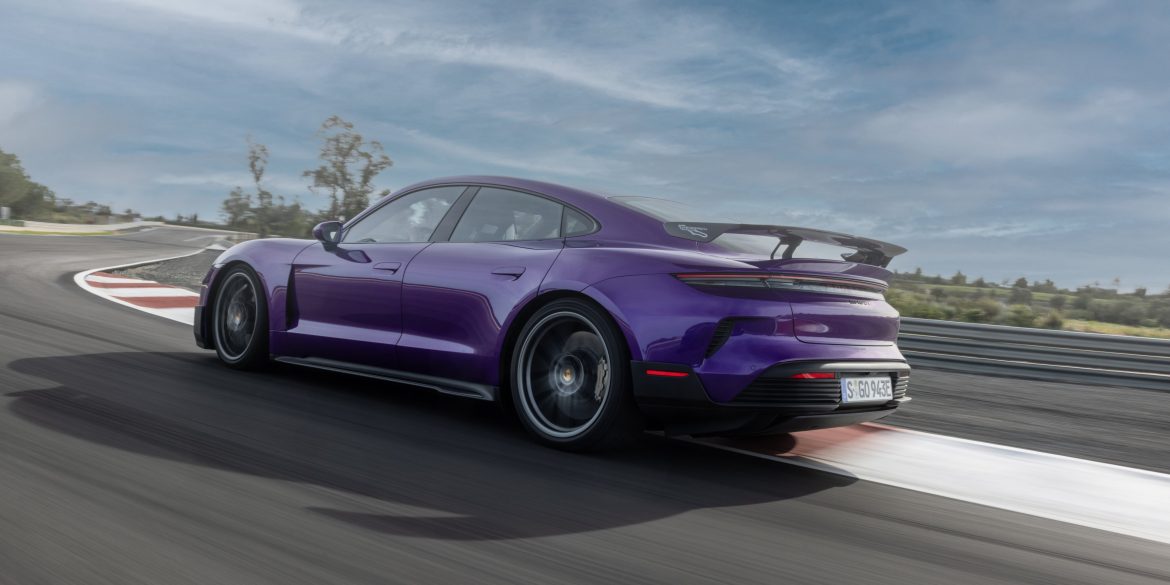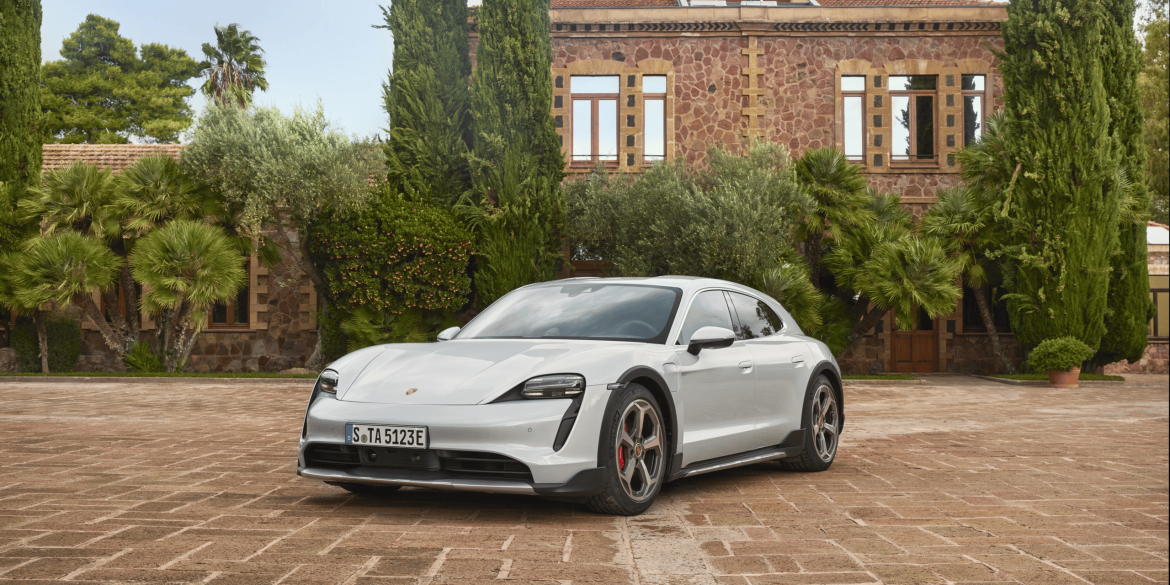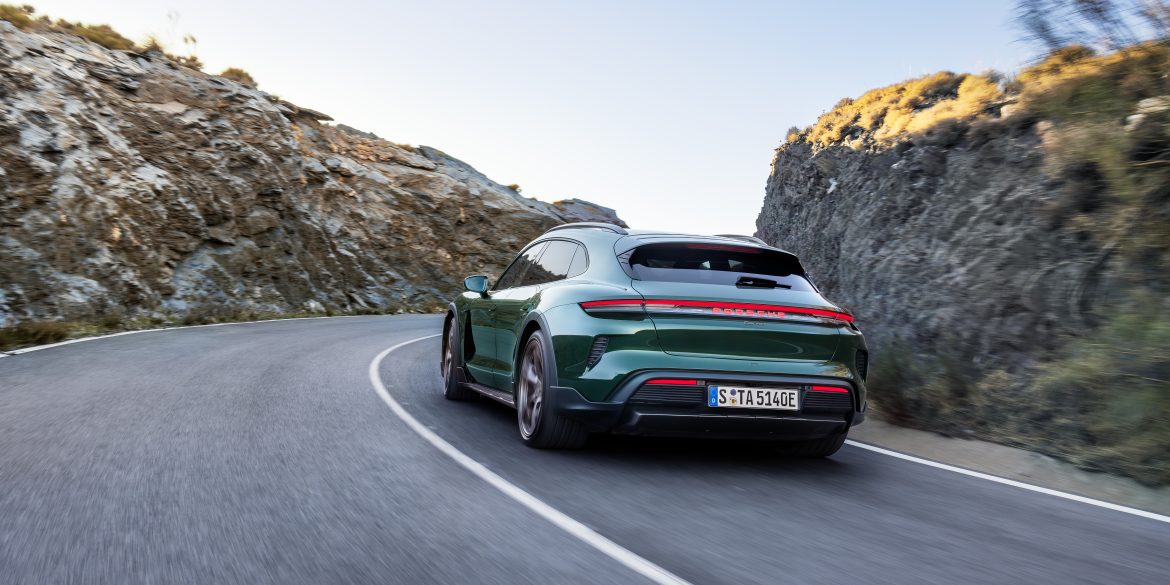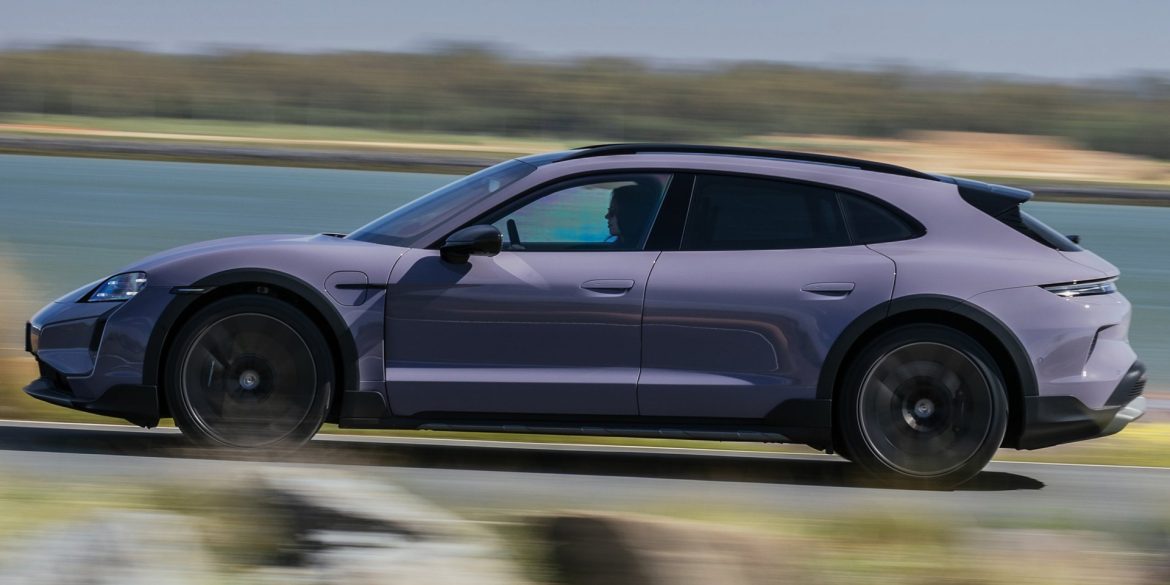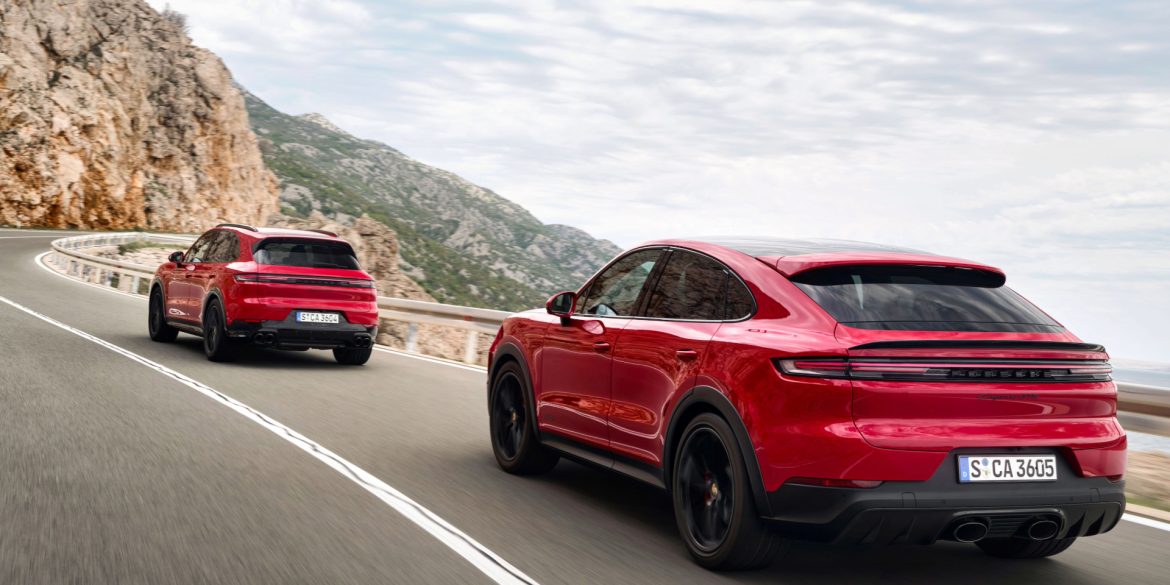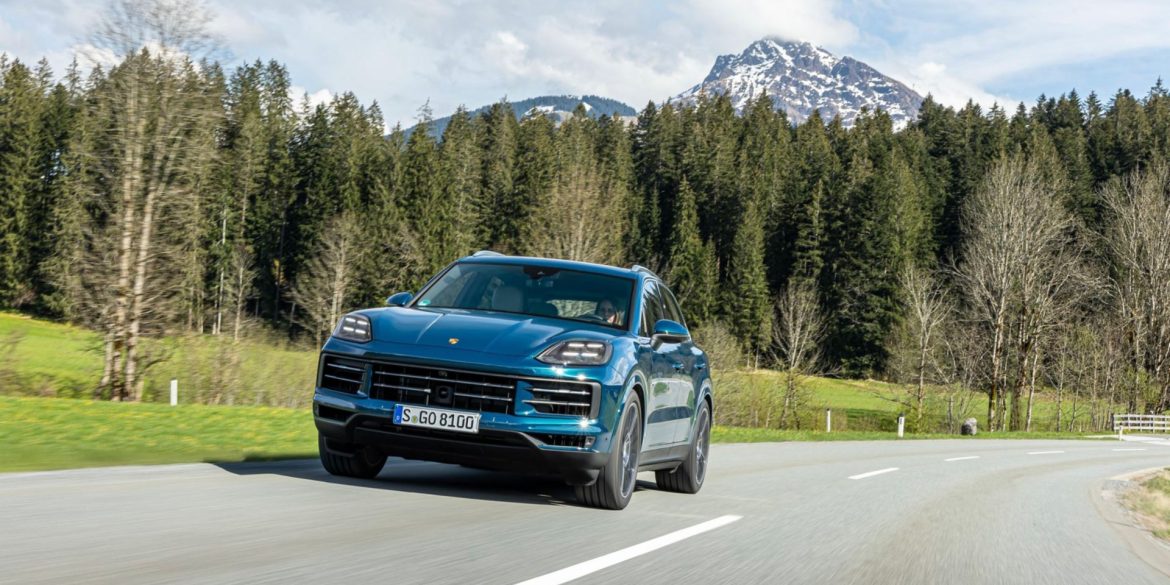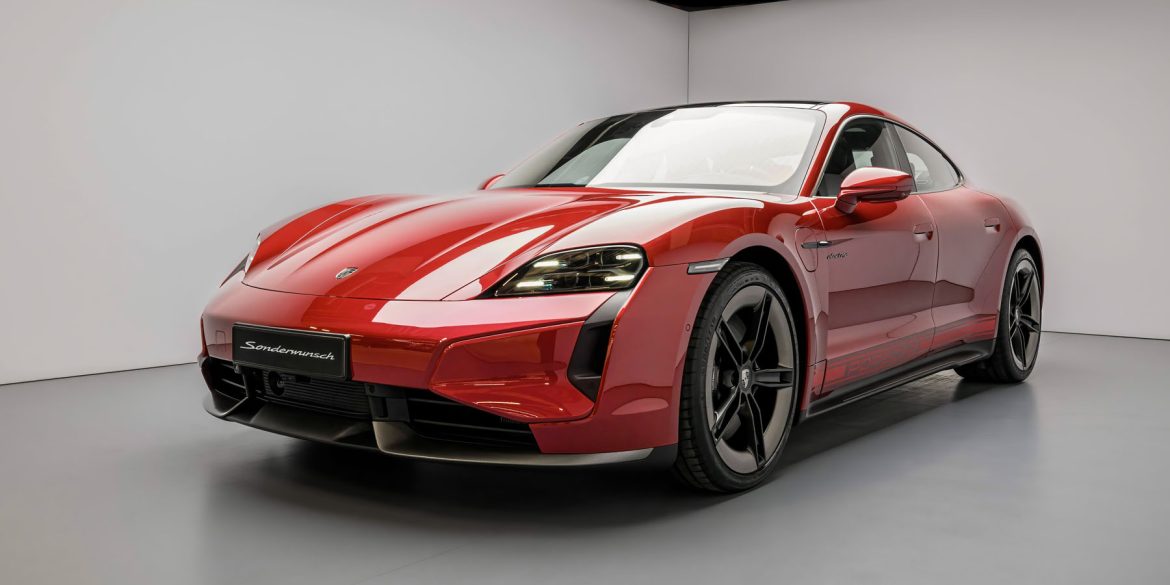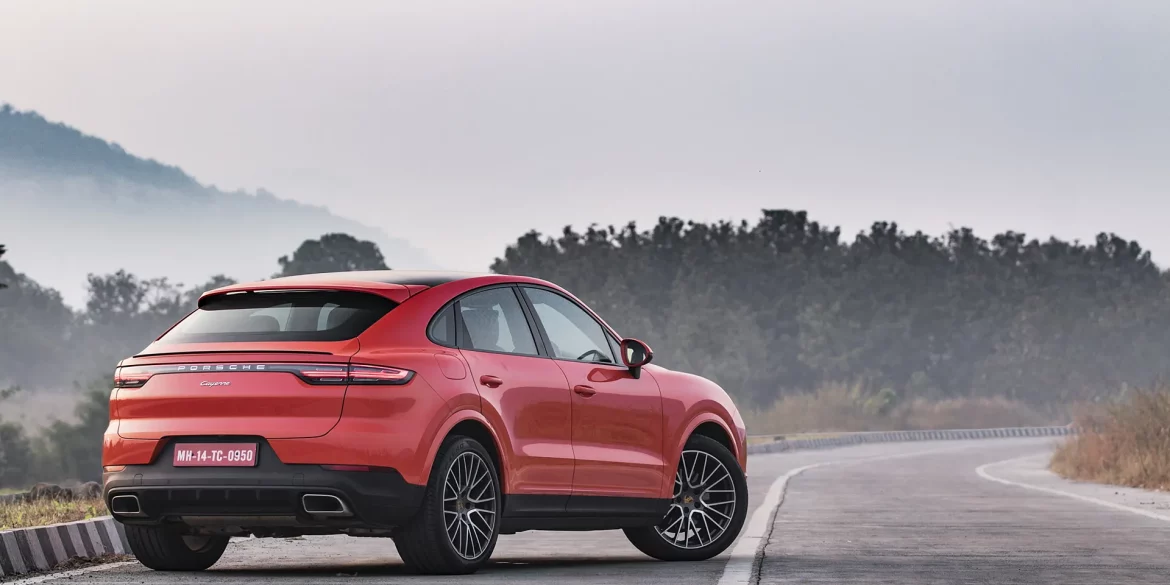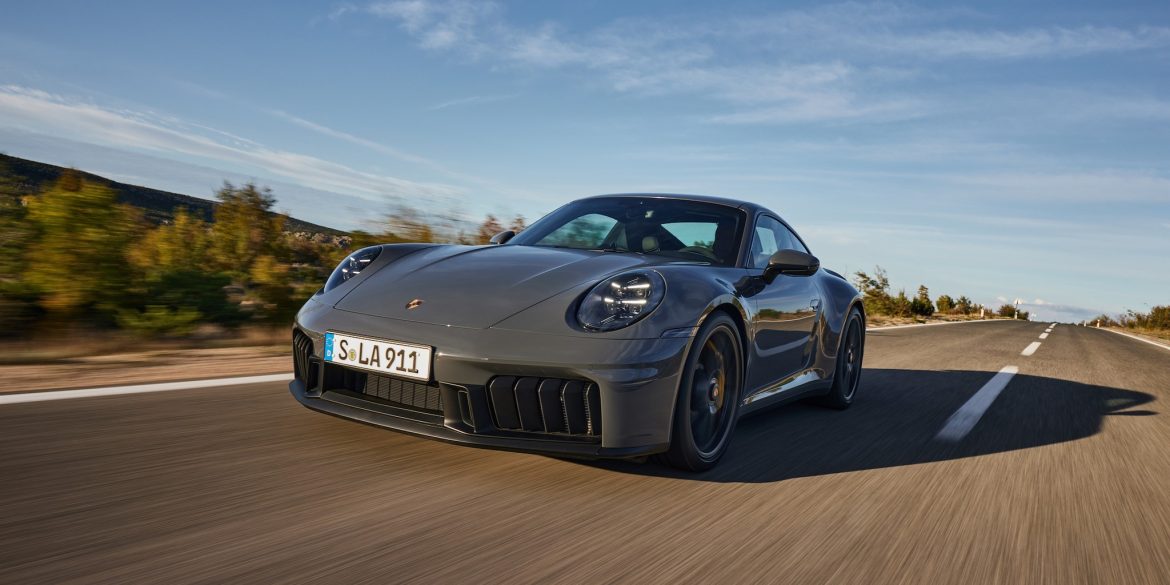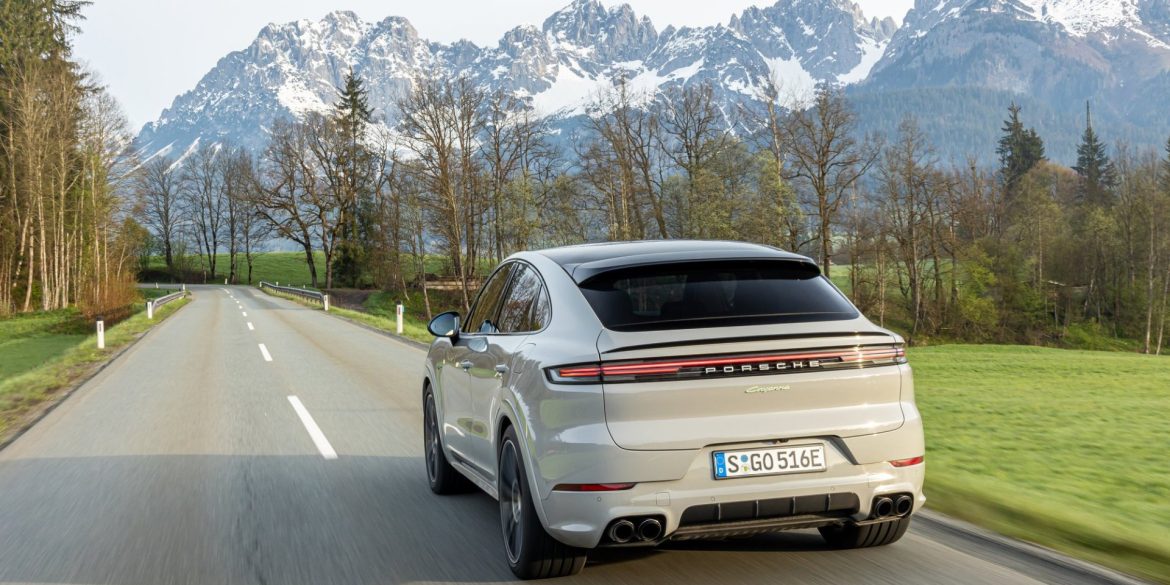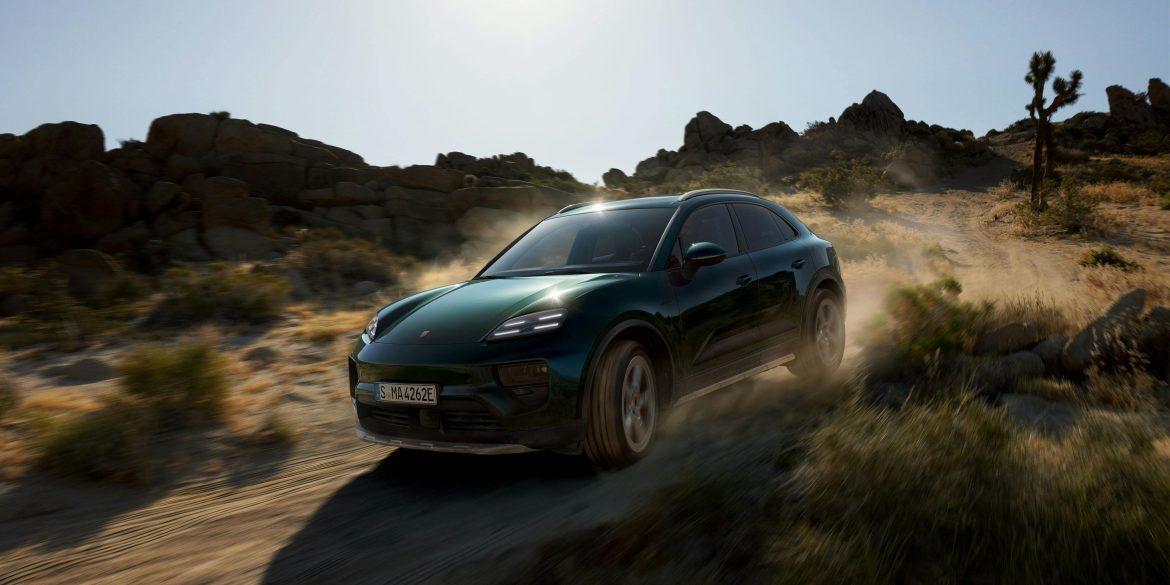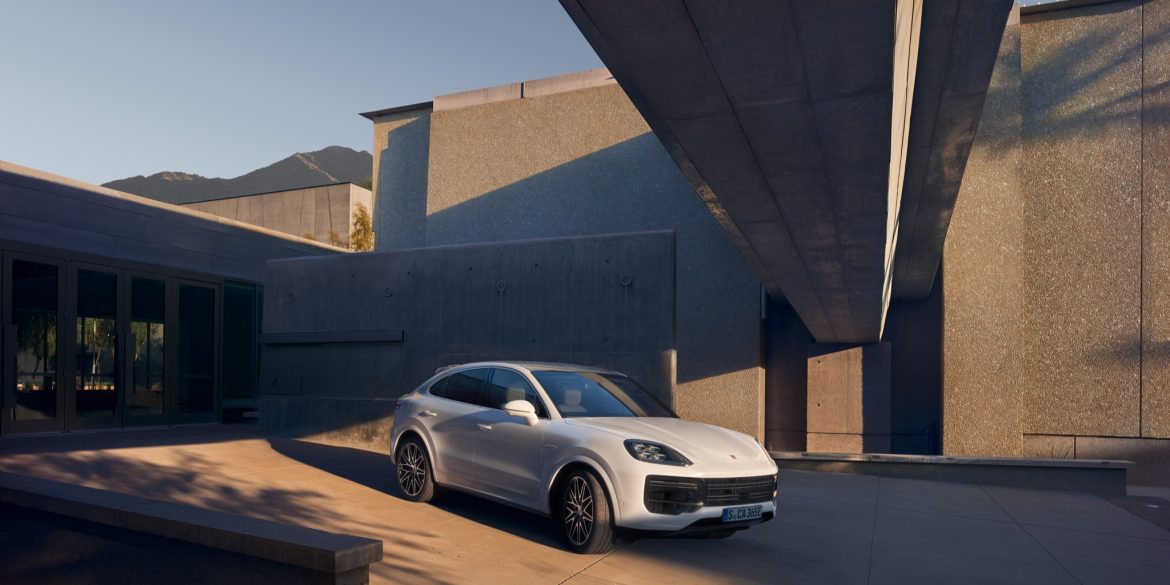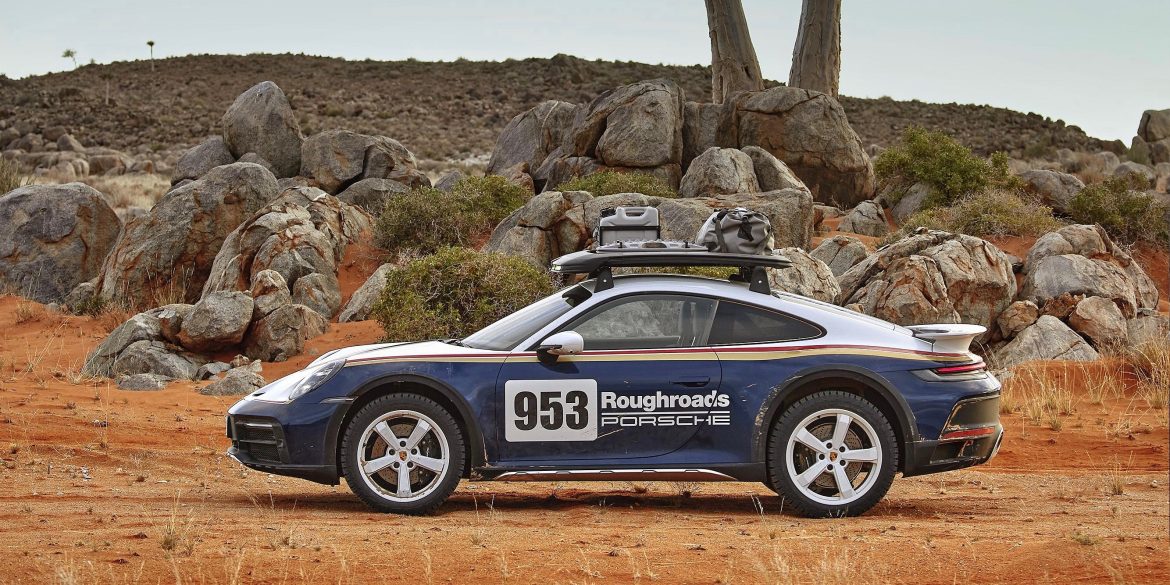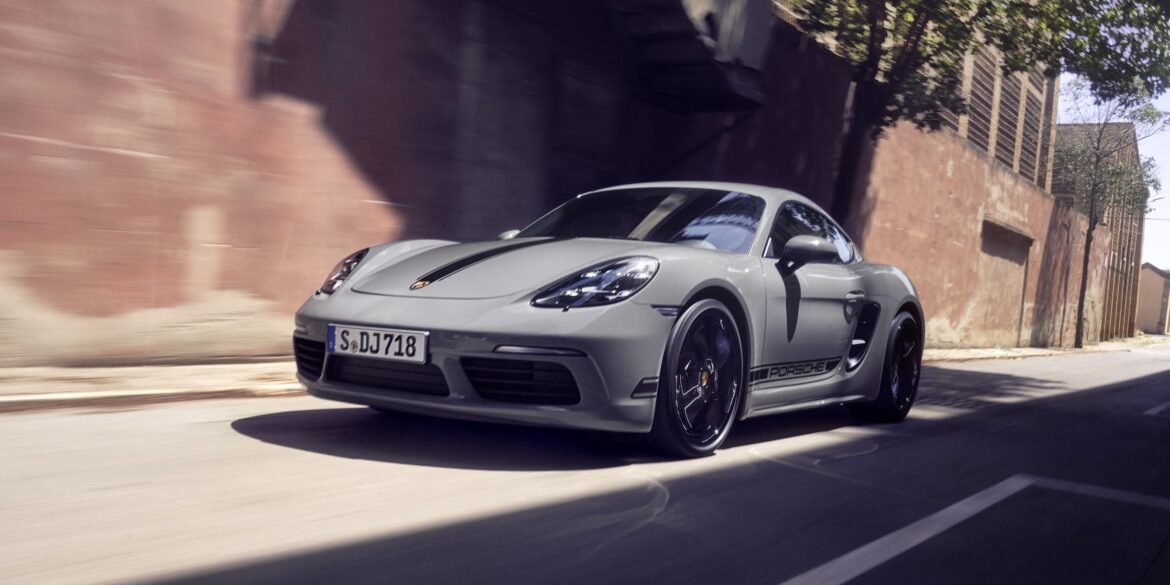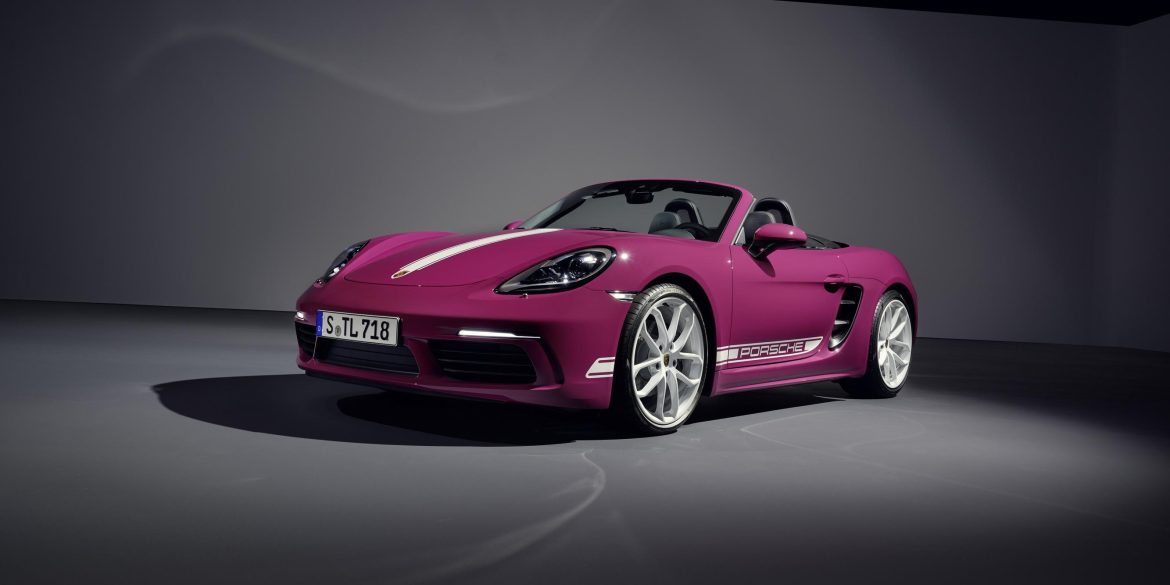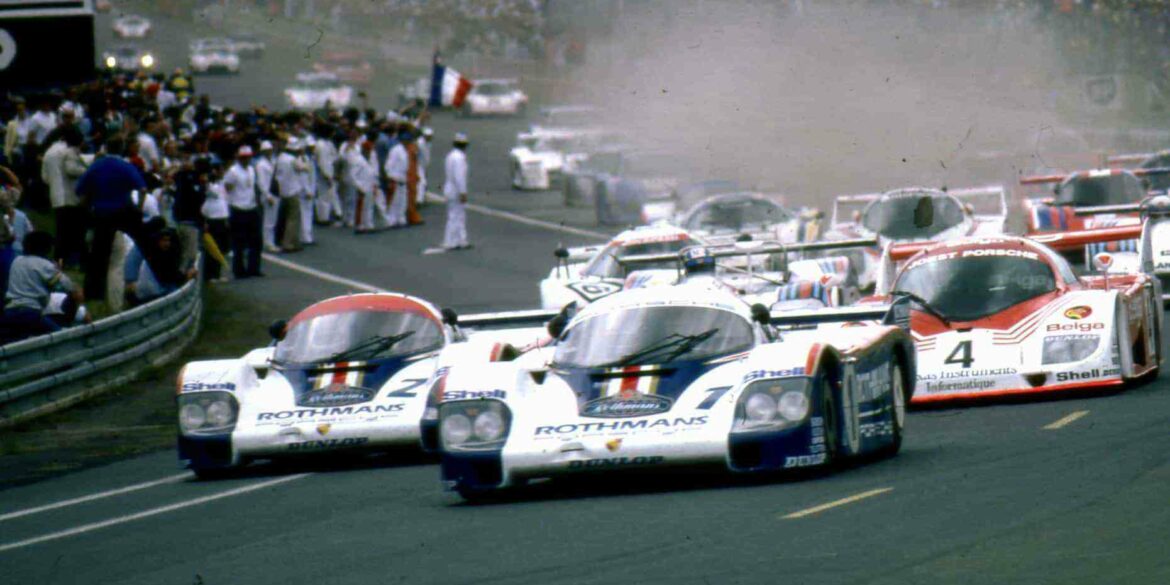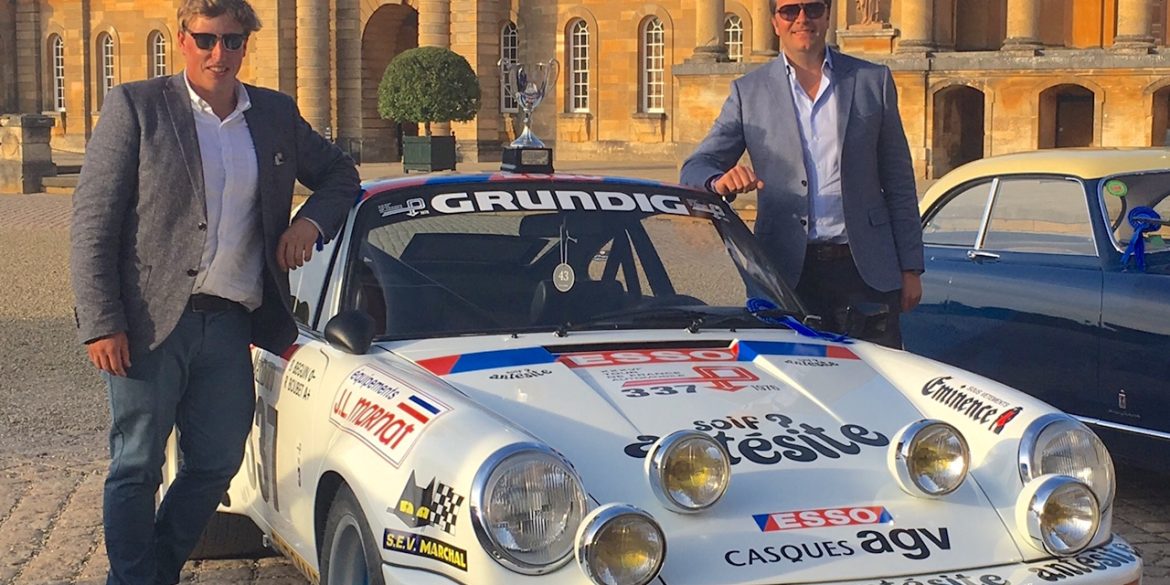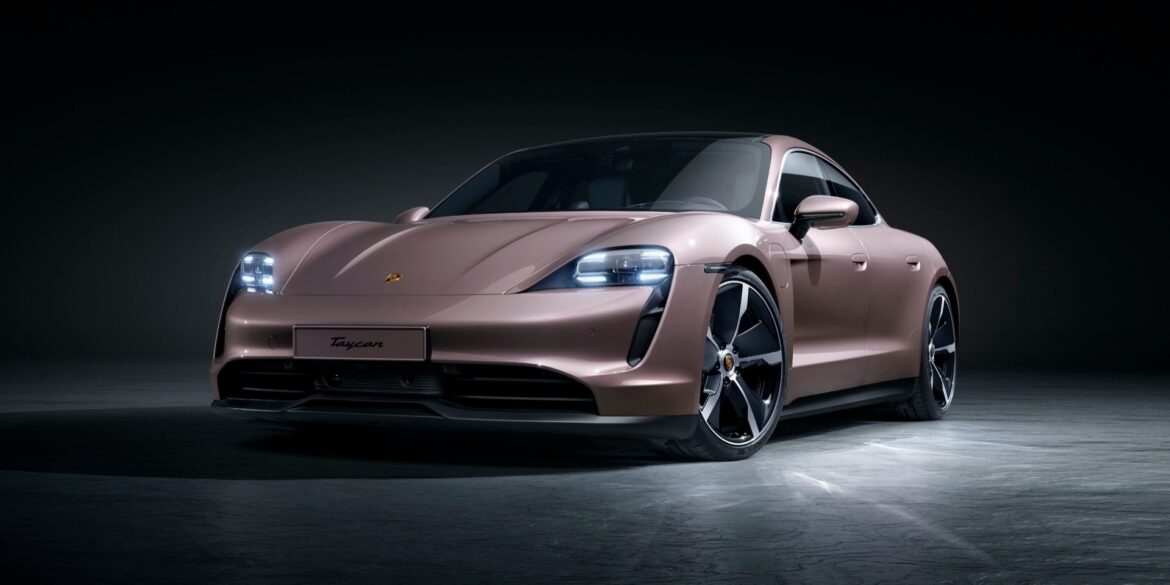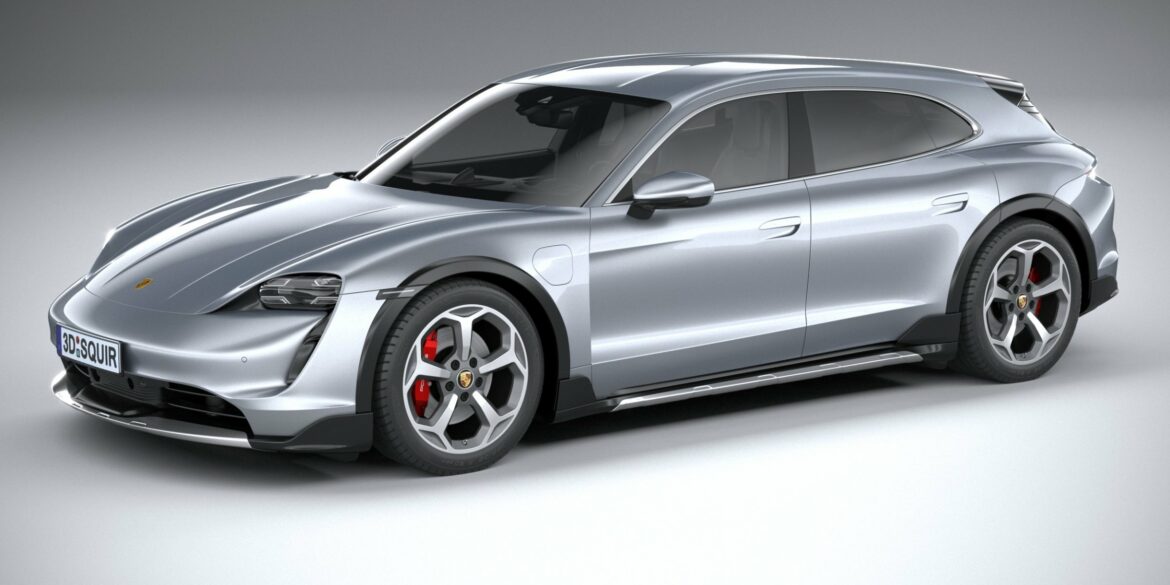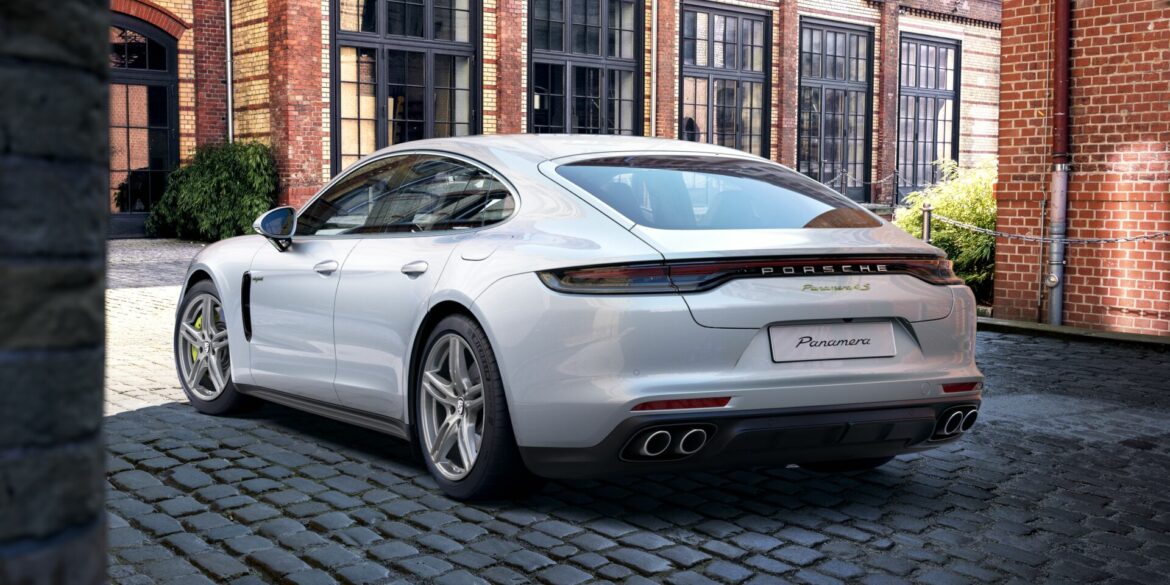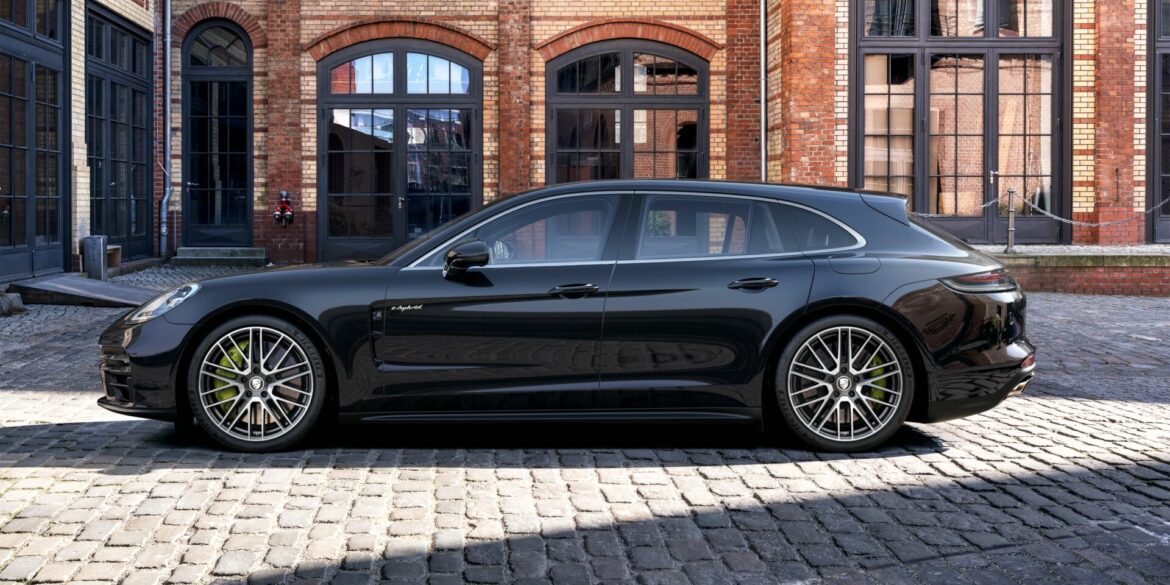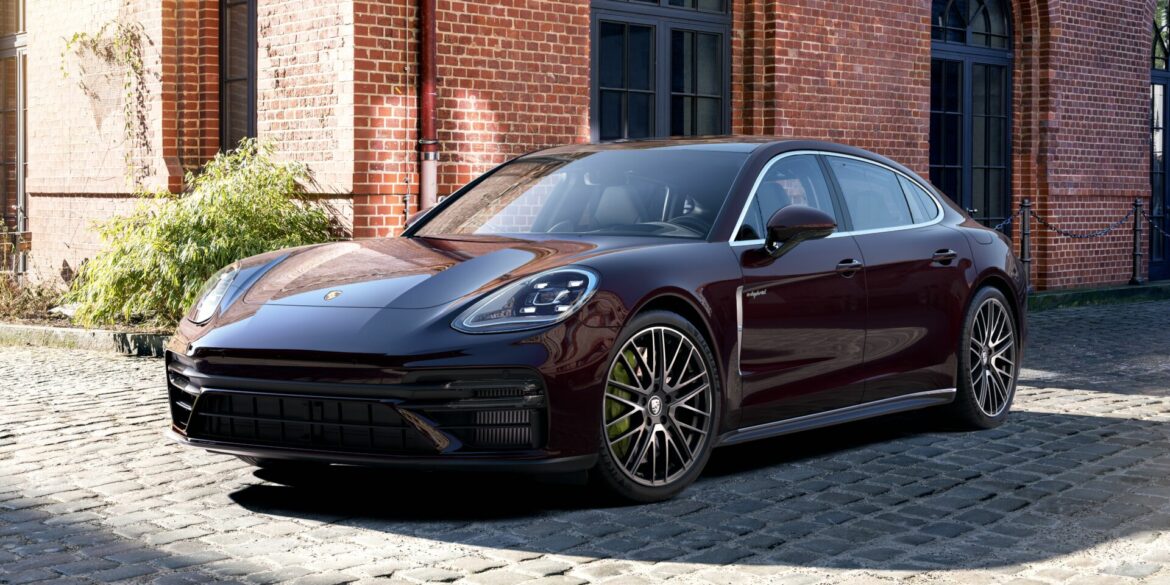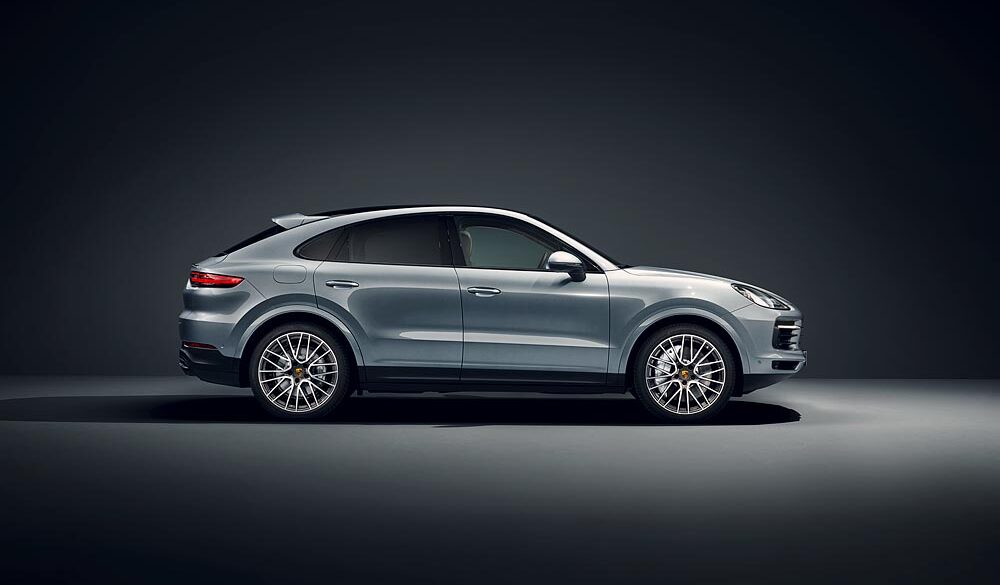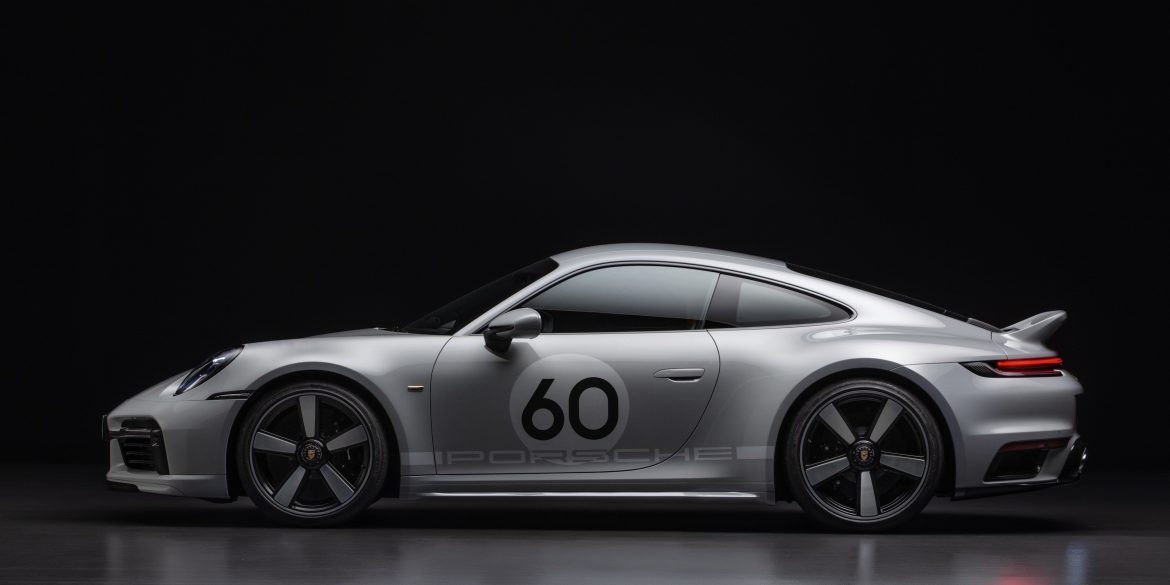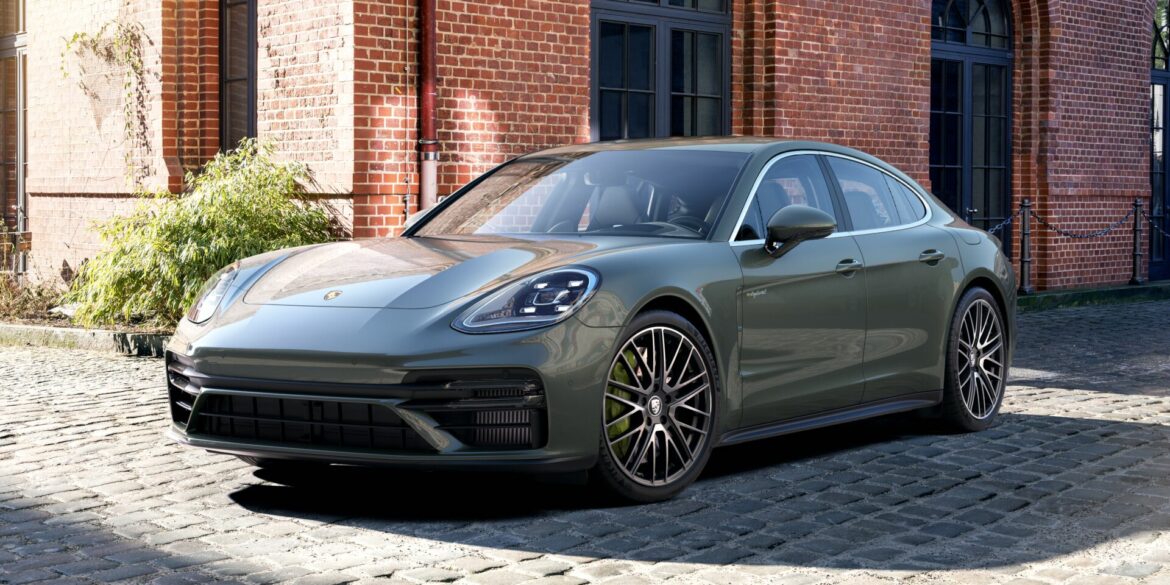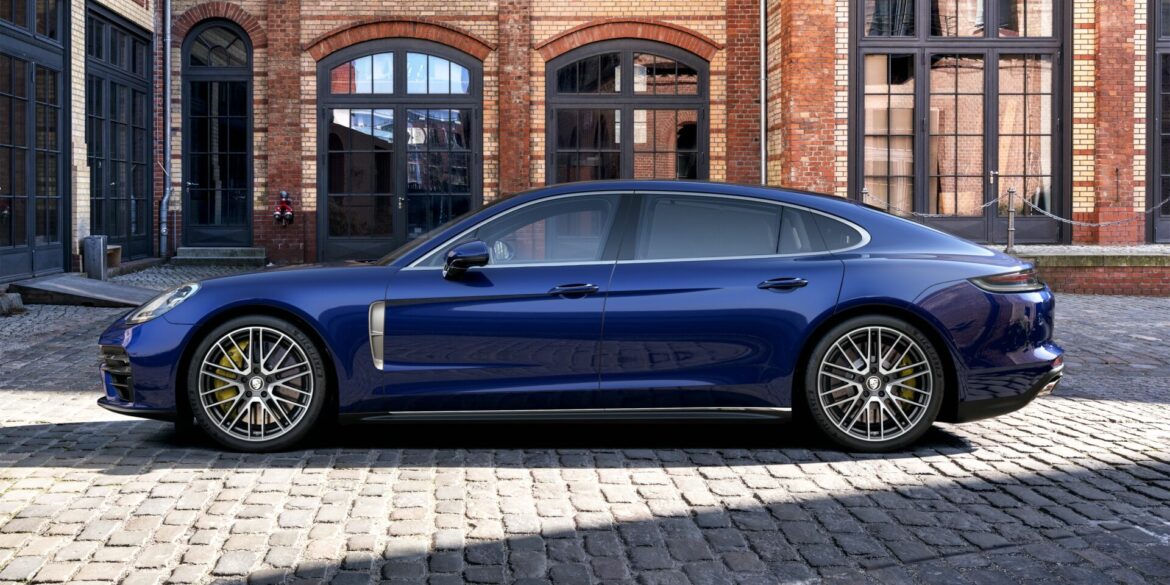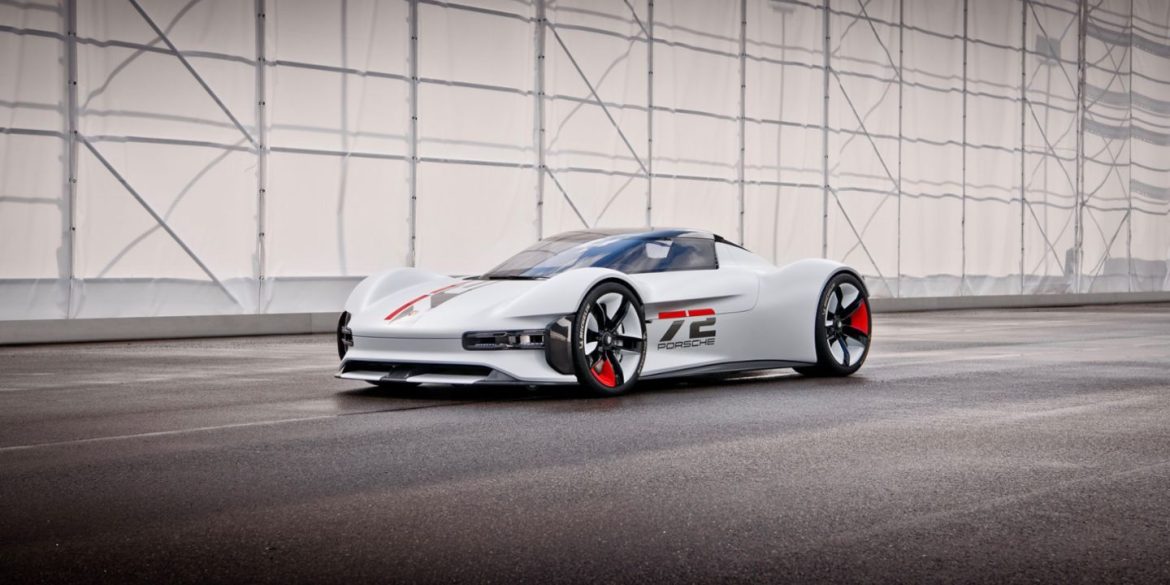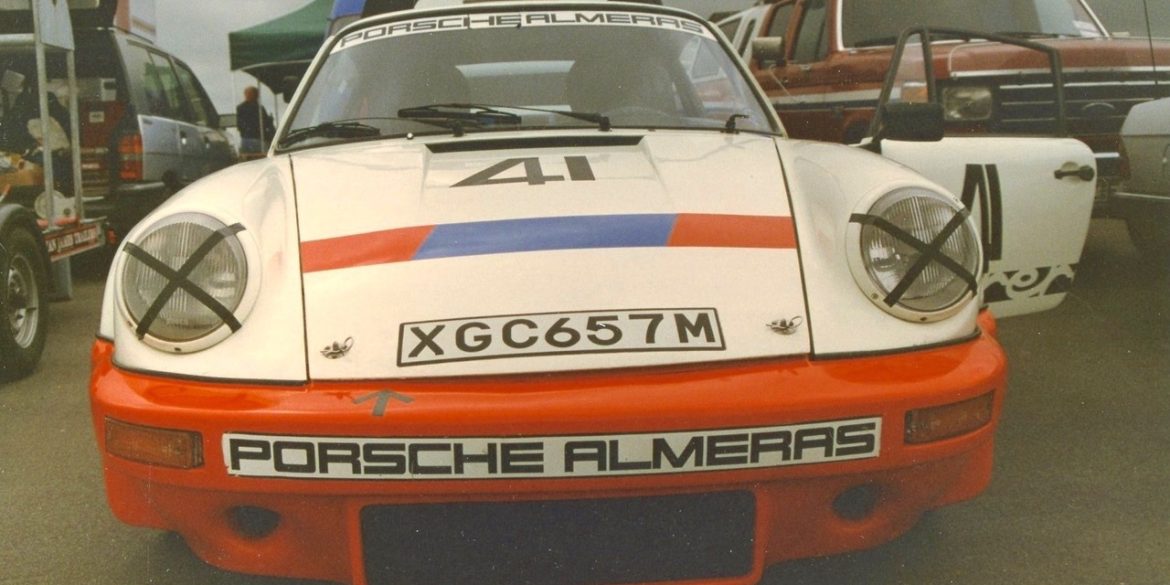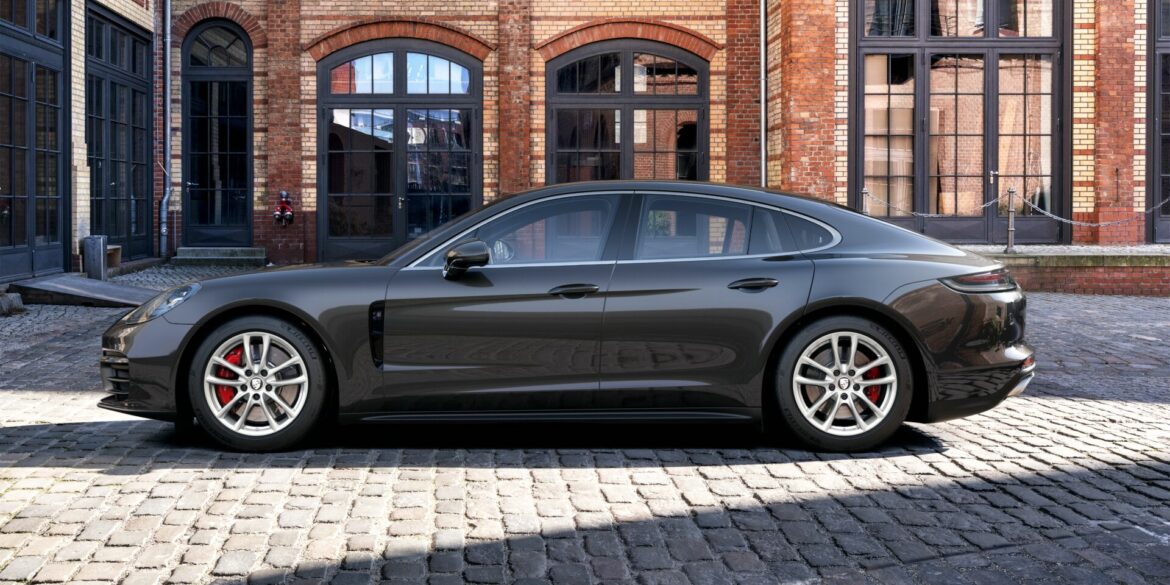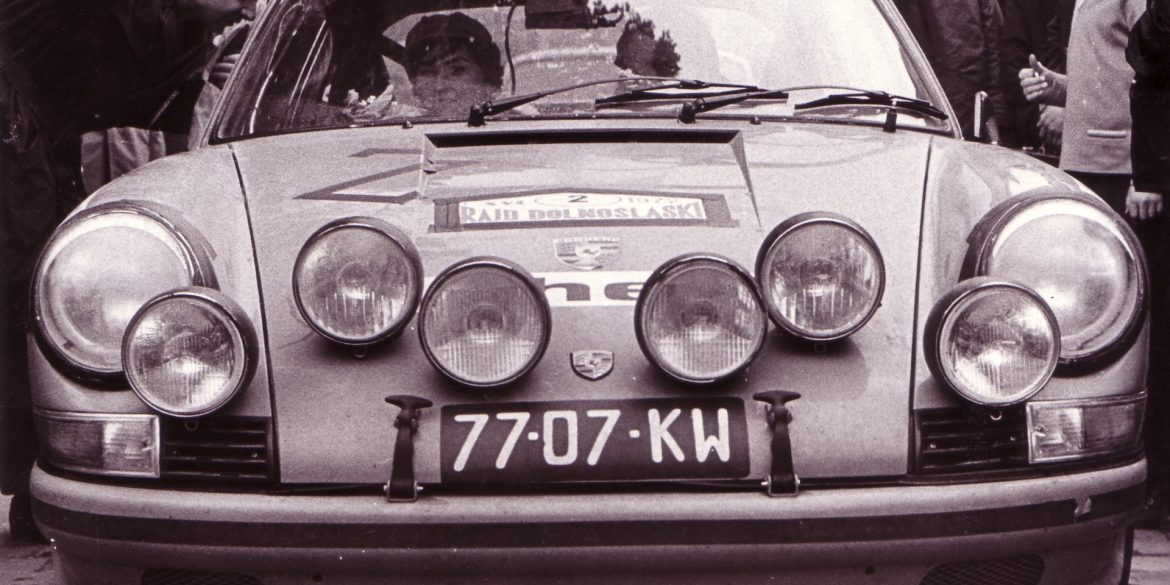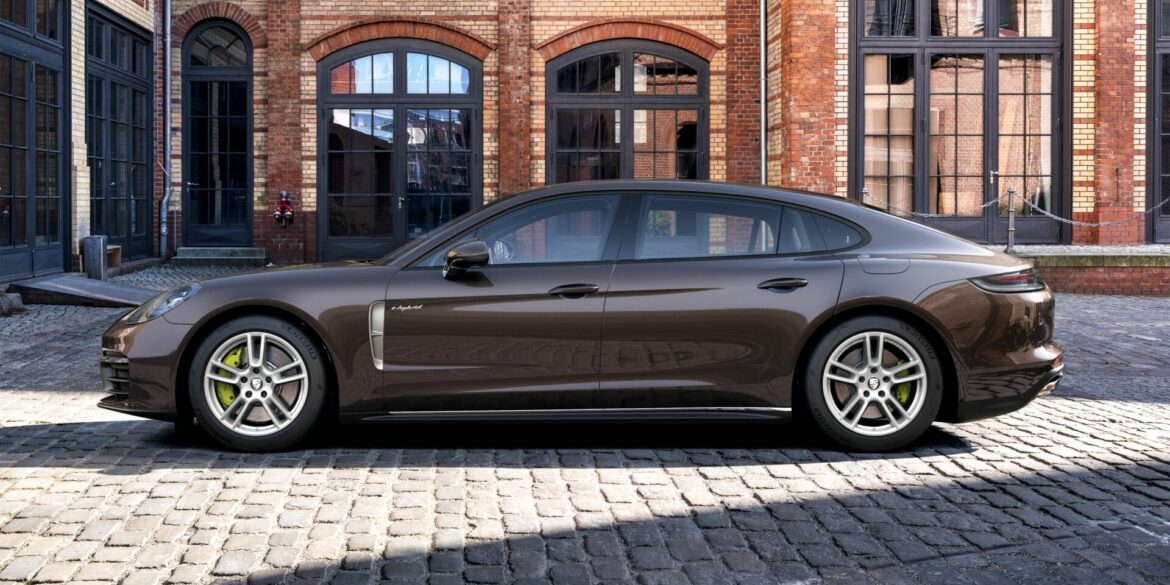The Search for an Open 911 Did the phasing out of the Type 356 and its cabriolet model mean that in its new 911 coupe regime Porsche lacked an open car of any kind? Technically it didn’t but actually it did. In September of 1965, at the Frankfurt Show, Porsche...
A New Era for Porsche Performance “We are in the GT business,” said Porsche racing engineer Norbert Singer, “so we will make one.” That was in the summer of 1995 when Porsche responded to the revival of interest in GT-class racing and the challenge of the McLaren F1 by starting...
Revered as one of the most important companies in the Porsche segment in the 80s and 90s, Fabcar left an impressive legacy on the racetrack, with its products being synonymous with reliability, novelty and speed. With these attributes in mind, we take a look back at the history of this...
Background and Post-War Context Coming out of World War 1, Ferdinand Porsche was in complete charge of Austro Daimler, one of the greatest and most versatile manufacturing companies of the former Austro-Hungarian Empire. In peacetime his factory at Wiener Neustadt, south of Vienna, had to reach out to world markets...
History In contrast to the American norm where the big three car makers would restyle their ranges every couple of years, the Porsche 911 remained essentially the same for most of its first decade. There were minor visual changes – chrome disappeared gradually, the wheelbase was lengthened by two inches...
With the obligatory shift away from ICE, the 911 60th anniversary model, the 992 S/T may well come to be seen as the pinnacle of the internal combustion sports car. The 2023 911 S/T is likely to serve as a salutary reminder of the exemplary automotive engineering that society has...
As has been observed before, the advent of the 996 was a revolution at Porsche. If the longest-running sports car model in history was to have a future beyond the 1990s, it would require a comprehensive retranslation for the twenty-first century. The outcome was the radical new 996, which at...
Story by Greg James. Images by Harvey Kanter. The 964’s Controversial Arrival When the 964 was released in 1989, the initial reaction was not universally positive. In fact, many of the Porsche air-cooled faithful hated it. Too big, too bulbous, rides too high, and not in keeping with the Porsche...
History & Tech The 991 Range In modern manufacturing, car makers generally reckon to get a maximum of two model generations from platform as they are now called. Chassis and engineering improvements and above all the continued march of safety legislation mean that after a decade, the next generation will...
History & Tech More significant to North Americans is that the street version of the 2003 second-generation GT3 met EPA norms making it the first ‘hot’ 911 to be allowed officially in the US since the Carrera 2.4 S of 1972. When Porsche began making sports cars in the late...
The 987 Cayman and its immediate successor the 981 Cayman model represented Porsche’s first volume production mid-engined coupé. Using naturally aspirated flat six engines, it ran for a little over a decade until a turbocharged flat four changed the character of the car. Subtly differentiated from the Boxster from which...
Preamble No, I haven’t been lucky enough to have cumulatively clocked 10 years behind the wheel of a GT4, or multiple GT4s for that matter, but I did have a chance to sample a truncated version of what this experience would be like. That said, I think that having close-to-a-month...
Story by Greg James. Photos by Dan O’Connell. I love reading road tests. Especially those that involve shootouts when cars are pitted against each other. However, in the traditional automotive rags that get their revenues from advertisers, it’s often comical how close any number of performance cars finish points-wise when...
Background & Tech In the late 1960s, as California’s new anti-smog legislation became operative, it was apparent that highly tuned cars like the Porsche 911 would be affected. Breathing through carburettors and running on premium fuel, the 911 was soon in difficulty with traffic authorities. The S was even withdrawn...
Porsche is honoring its legendary automotive heritage with an extraordinary creation: the 718 Spyder RS Panamericana Special. This one-of-a-kind vehicle commemorates the 70th anniversary of the official Porsche team’s historic participation in the first era of the Carrera Panamericana, Mexico. As the final piece of a special trilogy celebrating the...
Words by: Glen Smale Images by: Corporate Archives Porsche AG The Porsche 956, and its later sibling the 962, became the most successful sports prototype in racing history during its domination of Group C between 1982 and 1992. Once the Porsche factory released the race car to private teams from...
Base Porsche Cayenne (2024 – Present) – Ultimate Guide The 2024 Porsche Cayenne doesn’t try to reinvent the wheel; it just quietly improves on everything it already did well. This is still Porsche’s best-selling SUV, the one that kicked off the brand’s foray into utility vehicles over two decades ago....
The entry-level Taycan returns with rear-wheel drive and a single-motor setup, but now benefits from increased range and efficiency thanks to revised thermal management and updated software. It’s more responsive off the line than before, with improved acceleration and a lower curb weight that keeps the drive pure and balanced.
New for 2025, the Taycan 4 adds all-wheel drive to the base car’s minimalist, driver-focused experience. It fills the gap between the base model and the 4S, offering more grip and performance without stepping into full-blown sports sedan territory. It’s ideal for all-weather confidence with a subtler footprint.
The sweet spot in the lineup, the updated 4S now delivers even more punch with improved 0–60 mph times and a longer range. Its dual-motor setup, sharpened chassis tuning, and enhanced regen braking make it feel livelier and more engaging than ever before. It’s a true daily-driver sports EV.+
The GTS remains the enthusiast’s choice, now sharper and faster than before. Revised suspension tuning and recalibrated throttle response make it a performance standout, with a distinct character that’s more focused than the 4S but less extreme than the Turbo models. It’s also the best-sounding Taycan thanks to its unique synthetic soundtrack.
The 2025 Taycan Turbo gets a big performance bump, with quicker acceleration and a new overboost function that launches it into supercar territory. Despite the name, there’s no actual turbocharger — just raw electric muscle and unmistakable Turbo badging. It blends luxury and serious pace.
Still the range-topping beast (until the GTs arrived), the updated Turbo S gets even quicker, with a 0–60 mph sprint in just over 2 seconds. Porsche has refined its launch control and increased peak output, making it ferocious yet composed, with immense traction and top-tier cabin refinement.
New for 2025, the Turbo GT is the most extreme Taycan yet — track-bred and record-setting. With over 1,000 hp in launch mode and revised aero, it’s faster than many supercars. Active suspension, ceramic brakes, and specific chassis tuning make it razor-sharp on both road and circuit.
This is the ultimate no-compromise Taycan. It deletes the rear seats, adds more carbon fiber, shaves off weight, and turns the Turbo GT into a Nürburgring assassin. It’s the Taycan distilled into pure performance form, with a 0–60 time under 2 seconds and a top speed of 190+ mph. No frills, all focus.
The wagon-bodied GTS returns, combining style, space, and speed in equal measure. The Sport Turismo layout is practical without being lifted like the Cross Turismo, and the GTS enhancements make it every bit as thrilling as its sedan counterpart, just with a more versatile rear hatch.
The 4 Cross Turismo is a rugged, all-wheel-drive wagon with mild off-road capability and increased ride height. It’s now more efficient and better equipped, making it a great all-weather alternative for those wanting something more adventurous but still distinctly Porsche.
Balancing performance and utility, the 4S Cross Turismo gets all the 2025 tech upgrades while offering more power and sharper dynamics than the 4. It’s arguably the best all-arounder in the lineup, with room for gear, optional roof rails, and a driving experience that belies its wagon silhouette.
With Turbo-level performance in a wagon shell, this model blends serious straight-line speed with grand-touring capability. You get the added cargo flexibility and the same brutal dual-motor powertrain as the sedan, now with a touch more practicality baked in.
The fastest wagon Porsche has ever built, the Turbo S Cross Turismo hauls — both in terms of acceleration and cargo. It rockets to 60 mph in just over 2 seconds while still offering rear-seat comfort and generous luggage space. For those who want it all, this is it.
Current Porsche Cayenne GTS Coupe – Ultimate Guide The 2024 Porsche Cayenne GTS Coupé brings the same performance-focused upgrades as the GTS SUV but packages them in a sleeker, more expressive silhouette. With a lower roofline, unique design details, and a few exclusive features, the GTS Coupé is aimed at...
Current Porsche Cayenne GTS – Ultimate Guide The 2024 Porsche Cayenne GTS SUV returns with a more focused edge, delivering the kind of driving experience that sets it apart from the rest of the Cayenne lineup. While the standard Cayenne already blends sports car dynamics with SUV practicality, the GTS...
Current Porsche Cayenne S – Ultimate Guide The Porsche Cayenne has always walked the line between a luxury SUV and a true performance machine. For 2024, Porsche delivered one of the most extensive updates in the model’s history. Nearly everything gets touched: powertrain, suspension, interior layout, and even the lighting....
2024 Porsche Taycan Turbo K-Edition Porsche Korea is celebrating its 10th anniversary in 2024. To mark the occasion and to thank its Korean customers, Porsche is launching a unique limited-edition Taycan Turbo K-Edition with exterior and interior design elements inspired by Korean culture. The model is available exclusively in Korea....
Current Porsche Cayenne Turbo GT – Ultimate Guide The 2024 Porsche Cayenne Turbo GT is back, and it’s even sharper, faster, and more focused than before. Available only as a Coupé, Porsche designed the Cayenne Turbo GT for maximum on-road performance, blending everyday practicality with true track-worthy handling, all without compromising...
Current Porsche Cayenne E-Hybrid SUV – Ultimate Guide The 2024 Porsche Cayenne E-Hybrid SUV returns with more power, more electric range, and smoother operation, all wrapped in the familiar, practical shape of Porsche’s best-selling SUV. This year, Porsche has made some meaningful upgrades under the skin that not only improve...
Current Porsche Cayenne S Coupe – Ultimate Guide The Cayenne S Coupé has always played the stylish sibling in Porsche’s SUV family, leaning into design without giving up the muscle. For 2024, it returns with sharper looks, smarter tech, and, most importantly, a V8 under the hood. This year’s update...
Current Porsche Cayenne S E-Hybrid Coupe – Ultimate Guide The 2024 Porsche Cayenne S E-Hybrid Coupe offers a slightly different flavor of performance and luxury, designed for drivers who want the efficiency of a plug-in hybrid and the sleek style of a sportier SUV. It shares its powertrain with the...
Current Porsche Cayenne Coupe – Ultimate Guide The 2024 Porsche Cayenne Coupe is Porsche’s stylish alternative to the traditional Cayenne SUV, offering buyers the same dynamic performance with a more distinct, sport-oriented design. Introduced initially in 2019, the Cayenne Coupe has quickly become popular among enthusiasts who value both aesthetics...
Whether it was the news you were dreading or the news you looked forward to—or perhaps it simply piqued your non-partisan interest—the Porsche 911 hybrid is now officially here. This latest bombshell announcement coincides with the German automaker’s official unveiling of the 992-generation’s mid-life refresh, conventionally referred to as the...
Current Porsche Cayenne S E-Hybrid SUV – Ultimate Guide The 2024 Porsche Cayenne S E-Hybrid SUV strikes a careful balance between performance, luxury, and electrified efficiency. Positioned between the standard E-Hybrid and the high-output Turbo E-Hybrid, this model brings more than just a power bump it represents a refined, tech-forward...
Current Porsche Cayenne E-Hybrid Coupe – Ultimate Guide For 2024, the Porsche Cayenne E-Hybrid Coupe shares its upgraded hybrid powertrain with the SUV variant but packages it in a sleeker, more style-focused body. While the drivetrain and tech updates mirror what you’ll find in the standard Cayenne E-Hybrid, the Coupe...
As the pinnacle of luxury and technology in the Macan lineup, the Turbo Electric showcases cutting-edge digital displays, exclusive design details, and the most sophisticated infotainment and safety technology Porsche offers. It has dual electric motors that produce 630 horsepower and 833 lb-ft of torque. This power enables the SUV to accelerate from 0 to 60 mph in just 3.1 seconds.
The 2025 Porsche Macan 4S Electric is an all-wheel-drive SUV featuring dual electric motors that produce up to 509 horsepower. It accelerates from 0 to 60 mph in approximately 3.9 seconds and offers an EPA-estimated range of up to 288 miles. Equipped with a 95-kWh battery, it supports DC fast charging at up to 270 kW, allowing a 10% to 80% charge in about 21 minutes.
The 2025 Porsche Macan 4 Electric is an all-wheel-drive SUV featuring dual electric motors that produce up to 402 horsepower. It accelerates from 0 to 60 mph in approximately 4.9 seconds and offers an EPA-estimated range of up to 308 miles. Equipped with a 100-kWh battery, it supports DC fast charging at up to 270 kW, allowing a 10% to 80% charge in about 21 minutes.
The 2025 Porsche Macan Electric (Base) is the entry-level model in Porsche's all-electric Macan lineup. It features a single rear-mounted electric motor producing 335 horsepower and 415 lb-ft of torque, enabling acceleration from 0 to 60 mph in 5.4 seconds. Equipped with a 100-kWh battery pack, it offers an EPA-estimated range of 315 miles. The Macan Electric supports fast charging up to 270 kW, allowing the battery to charge from 10% to 80% in approximately 21 minutes
Current Porsche Cayenne Turbo E-Hybrid Coupe – Ultimate Guide The 2024 Cayenne Turbo E-Hybrid Coupe takes the same powerhouse formula as its SUV sibling and wraps it in a sleeker, more aggressive design. You still get the same bonkers 729 horsepower and 700 lb-ft of torque, the same plug-in hybrid...
Current Porsche Cayenne Turbo E-Hybrid SUV – Ultimate Guide The 2024 Cayenne Turbo E-Hybrid isn’t just another high-performance SUV, it’s the most powerful Cayenne Porsche has ever built. With a powertrain that marries a twin-turbo V8 to a significantly improved plug-in hybrid system, this SUV delivers both insane horsepower and better-than-expected...
Today Porsche revealed two new versions of their popular mid-engine 718 models, for the 2023 model year we’ll be getting the new Porsche 718 Boxster Style Edition and 718 Cayman Style Edition, but before you run to your local Porsche dealership outside of Europe, be prepared for a longer waiting...
Porsche 718 Boxster Spyder RS – Ultimate Guide Official photos: 2023 May 10 / Premiere: Sometime in June, 2023 / Market launch: Spring 2024 The 982 generation has been perhaps one of the best series of models that Porsche has put forward, as you do not attach the model number...
Built on the technology platform of the 718 Cayman GT4 RS, the Porsche Vision 357 is a design study that represents outstanding sports car performance. The exterior concept study is the highlight of the special exhibition “75 Years of Porsche sports cars” at the Volkswagen Group’s “DRIVE” Forum in Berlin. The fundamental concept reflects the interplay between tradition and innovation: what would the dream of a sports car of Ferry Porsche might look like today? A tribute to the 356 on its 75th anniversary.
Porsche's Taycan Sport Turismo is the new bodystyle for the 2022 model year (one of three bodystyles available for the 4s). It still gets the 562-hp 4S powertrain and is the sportiest looking variant. The Taycan Cross Turismo's has a great combination of looks, speed, and space put it into the realm of the now-legendary wagons like the Audi RS6 Avant and Mercedes-AMG E63 S wagon and they are some of our favorite cars on the planet.
Porsche makes sports car history by launching its first publicly available rally car, the $223,450 911 Dakar. After extensive testing, Porsche has settled on a 3.0-liter twin-turbo six-cylinder boxer engine with 473 hp and 420 lb-ft of torque and an 8-speed PDK. True to rally form, an 80-mm suspension lifts the car, along with an optional roof rack and model-specific Pirelli Scorpion all-terrain tires.
Fresh colours and harmonious contrast packages characterise the new Porsche 718 Boxster Style Edition and 718 Cayman Style Edition sports cars. Available on the base model, this is a sweet package for the buyer looking to jazz up their base Cayman or Boxster and make them really special. Underlining Porsche’s commitment to ever more creative and vibrant bespoke finishes, the new models are characterized by special colors and matching contrasting elements. This is evident with the new color Ruby Star Neo, a modern interpretation of the color used on the 964 Carrera RS.
Fresh colours and harmonious contrast packages characterise the new Porsche 718 Boxster Style Edition and 718 Cayman Style Edition sports cars. Available on the base model, this is a sweet package for the buyer looking to jazz up their base Cayman or Boxster and make them really special. Underlining Porsche’s commitment to ever more creative and vibrant bespoke finishes, the new models are characterized by special colors and matching contrasting elements. This is evident with the new color Ruby Star Neo, a modern interpretation of the color used on the 964 Carrera RS.
Sports car racing went through some turbulent times in the early 1970’s. At the start (1970) the world championship was decided by the 5.0 liter sports cars such as the Porsche 917 and the Ferrari 512. The FIA /CSI (International rules body) at first did not think anyone would build...
Arguably the most extreme 911 to be build as a production car for the road and track. The most significant improvements made to the RS—over both the 992 GT3 and the previous-gen 991 GT3 RS—were applied to the aerodynamics and chassis departments of the car. The new 911 GT3 RS is even more optimized for track use than its predecessors. The spontaneously responsive, high-revving four-litre, six-cylinder boxer engine has proven ideal for use at track days and club sport events.
The return of the Touring badge, now on the Type 992. In a way, the car may seem sparingly equipped, and apart from the paint color, the wheels, and if you want a 7-speed manual or 8-speed PDK, it is. But it’s what it’s equipped with that makes the Porsche drivers smile. The purist-focused Carrera T is perfectly specced for fun, with its sweet rear-wheel drive, no rear seats, and a manual gearbox for just $118,050.
There are many legendary Porsche racing cars that command respect for their legacy, their series of wins in a season, or their pure technological advancement. The Porsche 917LH and the Porsche 917K come immediately to mind, as well as the 935/78 “Moby Dick” (for having one of the craziest whale...
When I’m not helping to sell the occasional old race car, or visiting old race car meetings, I’ve usually got my head down, researching various projects for clients, usually to do with Porsches—although Lola T70s and the like often pass my way too. Probably the most interesting project that I’ve...
Porsche 963 LMDh – Reviews, Pricing, Specs & Buyers Guide Porsche’s first customer prototype in more than a decade comes with a $2.9 million price tag, making the 963 the most expensive model offered by the German auto manufacturer. Built by Canadian racecar constructor Multimatic, the LMP2-derived 963 chassis could become...
Chassis No: 911 460 9029 Engine No: 684 0053 Prod. No: 104 2302 G/box No: 716 1222 (15/1) Colour: White/Gold First delivered to: Sonauto Dealership , Paris, France Aluminum roll bar fitted First registered as: 556 ACR 75 Awaiting the start of the 1974 edition of the Tour de France...
If you're not one for celebrating special models that don't improve performance, this 2023 Porsche 911 Carrera GTS Cabriolet America will be right up your alley. Porsche has gone beyond just slapping on some new paint, unique trim, and special wheels. There is some performance to go along with the history behind the America name-plated Porsche, besides the incredibly long name.
Porsche is celebrating the 90th anniversary of the Hockenheimring track with a special edition of one of its models. The Porsche Taycan GTS Hockenheimring Edition is the first special edition based on the brand's first electric vehicle. It features several elements to set it apart. It all starts with the Stone Grey paint and "Bronzite" accents to bring a dash of flair. On the inside, Porsche Exclusive Manufaktur have selected black leather for the upholstery, while the contrasting elements are finished in a shade that is called "Island Green."
This entry-level variant in the Taycan lineup is cheaper than a 911 and Panamera, making it an interesting prospect. It gets one less motor than the Taycan 4S and less standard equipment. Horsepower and torque figures change depending on whether you get the standard 79-kWh battery or pay $5780 for the 93.4-kWh Performance Battery Plus. The bigger battery gives you 469 hp and 263 lb-ft of torque when using launch control, or 375 hp in regular operation. According to Road and Track, the "base model could be the pick of the lineup".
With 750-horsepower, launch control and gravel mode in a family-friendly wagon, this may be the most practical car on the planet. Take the screaming fast all-electric Taycan Turbo S—the fastest, most powerful version atop the Taycan range—and make it a wagon with a little more ground clearance (0.78 inches) and more headroom (3.62 inches) in the rear seats, and you have the Taycan Turbo S Cross Turismo. The all-wheel-drive Taycan Turbo S Cross Turismo has one electric motor per axle, with a one-speed transmission up front and a two-speed transmission in the rear.
The performance-oriented all-electric station wagon has arrived and we like what we see. The Taycan Turbo Cross Turismo gets the same dual-motor all-wheel-drive as the Taycan sedan featuring a Gravel drive mode, standard air suspension, and minor ride-height increases. With a permanent-magnet motor at each axle, the rear drives a two-speed automatic and the front a single-speed gearbox. Power is a kind of nuts 616 hp and 626 lb-ft, which we think is more that enough for the kids daily trip to school. Feels much the same as the sedan version but looks way cooler.
Porsche's Taycan Cross Turismo is the wagon addition to the Taycan EV family and the 562-hp 4S variants is probably our favorite version. Why? Because the Taycan Cross Turismo's combination of looks, speed, and space put it into the realm of the now-legendary wagons like the Audi RS6 Avant and Mercedes-AMG E63 S wagon and they are some of our favorite cars on the planet. Do yourself and your family a favor and get this baby now.
With a spacious interior and two luggage compartments, providing comfort and convenience for four, the Taycan Cross Turismo body style is more practical than its sedan sibling. Unlike the Taycan sedan, all Cross Turismo models come standard with the larger of the two available battery packs, an 83.7-kWh unit. In the 4, that pack powers the two motors to an available 469 horsepower when using launch control. During normal use, you get 375 horsepower and 368 pound-feet of torque.
In 2022 the base model was released in this new Sport Turismo body style. This entry-level variant in the Taycan lineup is cheaper than a 911 and Panamera, making it an interesting prospect. It gets one less motor than the Taycan 4S and less standard equipment. Horsepower and torque figures change depending on whether you get the standard 79-kWh battery or pay $5780 for the 93.4-kWh Performance Battery Plus. The bigger battery gives you 469 hp and 263 lb-ft of torque when using launch control, or 375 hp in regular operation.
The Sport Turismo bodystyle is unique the to Taycan GTS for U.S buyers. It is the sexiest bodystyle in the range and more practical than the sedan too. It isn't the most powerful in the range; but it gets a wealth of standard equipment, especially the good performance stuff. The Taycan GTSSport Turismo sits between the 4S and the Turbo and has 590 hp and 623 ft lbs, good for 0 - 60 mph 3.5 seconds. It feels much more rear-driven than the Turbo and has way more engaging handling characteristics as a result.
Most of us have come to know what Porsche’s GTS lineage stands for: a focus on vehicle dynamics while deferring in terms of sheer horsepower to the most powerful in the range; a unique look and a wealth of standard equipment, especially the good performance stuff. Same formula for the Taycan GTS. It sits between the 4S and the Turbo and has 590 hp and 623 ft lbs, good for 0 - 60 mph 3.5 seconds. It feels much more rear-driven than the Turbo and has way more engaging handling characteristics as a result.
The Boxster 718 T was released for the 2020 model year as more sport-oriented versions of the base 718 models. As such, the T features the same 2.0-litre flat-4 engine as the base 718 but adds performance-oriented options such as Porsche's sport suspension system, the Sport Chrono package, and a limited-slip differential, along with minor cosmetic differences including special decals along the lower doors, a smaller-diameter steering wheel, door pull straps in place of standard door handles, wheels from the Porsche 992 Carrera S, and black rear badging.
This Panamera variant pairs a 2.9-litre twin-turbocharged V6 with an electric motor to serve up 552 hp and dynamism usually associated with non-hybrid coupes. The best part? The 'E-Hybrid' badging means this sedan also delivers the benefits of greater fuel efficiency and lower emissions. Then there's the fact that all electrified Panameras for the 2021 model year have 27% more battery capacity.
The Panamera Turbo S E-Hybrid Sport Turismo is extreme indulgence at its peak. A family wagon with almost 700 hp on tap and the ability to launch hard enough to strain your back muscles. Porsche claims the car can hit 60 mph in just 3 seconds. It's impressive on its own, but even then, it seems the carmaker was being conservative as some motoring journalists were able to clock a time of 2.7 seconds. That's faster than a Ferrari 488 GTB!
This Porsche limousine boasts impressive performance stats like the other Turbo S E-Hybrid variants. However, a lengthened wheelbase with a bias towards rear-seat luxury is the 'cherry on the cake' that sets this one apart. The car promises a sporty package with the luxury of a limousine, and to be fair; it mostly delivers on both counts.
Porsche is stuffing a built twin-turbocharged 4.0-liter into the Cayenne Coupe, and it's the most powerful V-8 the German automaker has ever produced. It makes 631 horsepower in this new Turbo GT model, and Porsche says its factory driver Lars Kern set a new SUV lap record at the Nürburgring Nordschleife in it lapping the 12.9-mile course in 7:38.9. The new Cayenne will arrive in the U.S, only in Coupe form, next year starting at $182,150.
The Cayenne Turbo S E-Hybrid Coupe mixes ultimate performance with comfort and Infotainment. The Turbo GT has all the attributes to be ahead of the game from the start. The twin-turbo V8 engine and electric motor combination make it an absolute monster. So much so, that it became top dog in the Porsche SUV lineup, relegating the 541-hp Cayenne Turbo to second place. This is an SUV that has the price, prestige, and performance, but it is the Coupe that has the looks. Generating 670 combined horsepower and 633 lb-ft of torque.
The 434-hp Cayenne S goes from 0 - 60 mph in just 4.2 seconds, same as the SUV. In fact, the Coupe and SUV share everything from engines to suspension components to interior trimmings and onboard tech, with only a sloping roofline setting them apart. Our advice. If you want less practicality with a cool fastback roofline, the Porsche Cayenne S coupe is a more stylish version of the Cayenne S. A great all rounder.
Porsche fitted the Cayenne E-Hybrid with a turbocharged 340 hp 3.0-liter V6 engine combined with a 136 hp electric motor for the drivetrain. Total combined power output reached 462 hp. The whole assembly was mated to an 8-speed automatic transmission that sent the power in all corners. Now it comes with a coupe body? Not sure the combination makes much sense to us, but hey this is Porsche and they know more than we do I guess.
The Cayenne Coupe is a version of Porsche's largest SUV with a heavy dose of extra swagger. Porsche introduced the new variant a year after the debut of the third-generation Cayenne, for the 2020 model year. While we like the look of the coupe, it feels out of place on the base Cayenne (which is more a family SUV choice). A nice package, but we would recommend spending a bit more and going for the Cayenne S or GTS.
Three letters are all it takes to describe the glint in your eye and intense goosebumps – GTS. Pure and thrilling: the Cayenne GTS models bring a motorsport atmosphere to the road. Enough power to strive for more freedom: with 453 hp and 457 lb.-ft. of torque, the 4.0-liter twin-turbo V8 engine exudes a drive that helps achieve your goals. The striking black accents on the front fascia, sideskirts and aerodynamic roof spoiler combined with the coupe bodystyle.
A total of 1,250 examples of the limited-edition model by Porsche Exclusive Manufaktur. While the original was a Carrera S, this time around, the power and handling come from a much feistier car, the Type 922 Turbo S. Returning is that amazing grey paint, that swooping ducktail spoiler, and the double-bubble roof. All-new is a mildly detuned Turbo S engine producing 543 HP and 442 lb-ft of turbocharged torque, mated to what can only be called a gift from the gods, a 7-speed manual gearbox.
There is nothing pretentious about the formidable Panamera Turbo S E-Hybrid. The big sedan is all about serious power, performance and style. It is currently the second-most-powerful car in Porsche’s entire lineup, only behind the 700-hp 911 GT2 RS. Only a few rivals can match the luxury sedan in terms of raw power.
This 'limousine' performance sedan offers the benefits of the non-executive Panamera Turbo S - plenty of power, athletic handling and overall elegance. However, the 'executive' badging means more space on the interior, especially for the rear passengers, courtesy of a wheelbase that's about six inches longer than the regular Panamera sedan. The powertrain is carried over unchanged from the non-executive version.
The Porsche Panamera Turbo S is unquestionably a performance beast, with plenty of power and presence to go with its muscular stance. However, the best bit about the Panamera Turbo S may be how it cleverly masks its brute strength and capabilities beneath an elegant layer of the silky-smooth ride and top-class luxury. In that sense, it perfectly fits the bill of a luxury performance sedan - just what Porsche set out to achieve.
If you’re like a few of us here at the StuttCars office, you’re the kind of person who has gained a serious interest in racing games, and to some extent, sim-racing over the past couple of years. While this can be put down mostly to the global pandemic as a...
There are 935s, and then there are 935s… Although almost a hundred Porsche 935s were built between 1975 and 1984, with the factory building some forty two cars and customers building the remainder, JLP-4 was by far the most radical of the Group 5 breed. No Subscription? You’re missing out...
When I first started writing my book, “R to RSR: The Racing Porsche 911s” in 1987, whilst living in England, I had little or no idea which RS/RSR cars had been raced in France. This was despite the fact that France was only 21 miles away across the Channel. The...
The Panamera GTS Sport Turismo costs only $6,900 more than the sedan variant in base trim. With the same powertrain and better practicality, this performance wagon may just be the most significant direct threat to the Panamera GTS sedan. The extra boot space, up to 49 cubic feet, with the rear seats folded down, makes the Panamera GTS Sport Turismo perfectly suited for a weekend trip to the shopping mall.
The Panamera Hybrid models have their strengths, but there is still nothing quite like the visceral experience behind the wheel of a high-performance vehicle with a formidable internal combustion engine, a formidable unit like the V8 found in the Panamera GTS (short for 'Gran Turismo Sport). It plays a significant role in portraying the character of the sports sedan as a lively performance and yet, family-friendly vehicle.
First, there's the extra boot space, courtesy of the wagon body style. It gives the Sport Turismo models more practicality over the sedans. Also, the Panamera 4S E-Hybrid is no slouch in the power department. It combines a 443-hp V-6 with a hybrid system to crank out 552 hp. That makes it the third-most-powerful Panamera variant, behind the Turbo S E-Hybrid and the Turbo S. In full attack mode, this family hauler can punch its way to 60 mph in less than four seconds
The Turismo Panamera models offer more practicality than the sedans, with the wagon body style offering valuable additional cargo space. However, there's also plenty of performance on offer. Take the Panamera 4S Sport Turismo, for example. It boasts a total of 1,384 litres with the rear seats folded, ideal for a weekend shopping trip. However, under the hood lies a potent engine in the form of a turbocharged V6 unit.
The Panamera 4S Executive is just a 'stretched-out' version of the regular Panamera sedan. The wheelbase has been lengthened by as much as 15 centimetres, an increase that mostly benefits the rear passengers. The Panamera 4S Executive sits above the Panamera 4 Executive, and they share several similarities, such as the panoramic sunroof, heated rear seats and power sunblind in the rear. Style-wise, the Panamera 4S Executive also boasts silver accents around the fenders and side skirts.
The Panamera 4 is the first model in the Panamera lineup to feature all-wheel-drive (evidenced by the '4' badging). A few steps above sits the Panamera 4S, a sedan that offers more oomph in performance. After all, that is why Porsche added the 'S' for 'Sport' to the name. It all starts with the engine. The twin-turbocharged V6 has been upgraded and now puts out 443 hp and 405 lb-ft of torque. That's a significant increase from the 325 hp and 331 lb-ft of torque offered in the base Panamera 4.
This story covers the development of the Porsche 911 RS/RSR prototype in the middle of 1972. Surprisingly, the very first Porsche RS/RSR, chassis number 911 360 0001 started life as a rally car—a factory built ST, 911 230 0769, which the factory itself re-numbered after the car had been returned...
The single most important distinction between this model and the Panamera 4 Sport Turismo is the 'E-Hybrid' badging. With the E-Hybrid Sport Turismo, Porsche has been able to combine performance, ample space and fuel economy into one family-friendly package. Like the sedan variant, the Panamera 4 E-Hybrid Sport Turismo is driven by a hybrid powertrain featuring technology from the 918 Spyder.
The Porsche Panamera 4 E-Hybrid Executive is specially tailored for those who enjoy spending time in the back seat. The body has been lengthened by 15cm, creating valuable space for rear passengers in particular. It's essentially a long-wheelbase version of the Panamera, with enhancements like eight-way power adjustment for the rear seats, heated rear seats, and power sunblinds for passengers in the back.
The Panamera 4 E-Hybrid still gets the 2.9-litre V6 - from the non-hybrid variant - that's good for 325 hp and 331 lb-ft of torque. In addition to that, there's an electric motor and battery combo that supply an extra 134 hp and 295 lb-ft of torque. In all, the Panamera 4 E-Hybrid boasts a maximum combined output of 455 hp and 516 lb-ft of torque, pushing the car well into sports car territory. The car weighs almost 5,000 lbs but will still accelerate to 60 mph in an impressive 4.2 seconds with the Sport Chrono Package.
The Panamera 4 Sport Turismo favours a 'Shooting Brake' style rather than being a pure wagon. This is evidenced by its sloping roofline towards the rear, sacrificing cargo space for a more stealthy profile. In addition, there's the pronounced shoulder and elongated window line, which lend the vehicle its striking appearance. The car slots in just above the base Panamera in a lineup that includes up to twenty-five different variants. The '4' references the standard all-wheel-drive, while the 'Sport Turismo' badging hints at more power and agile handling compared to the base trims.




